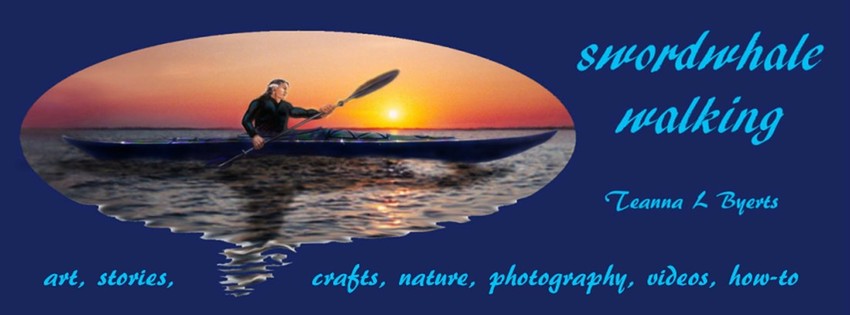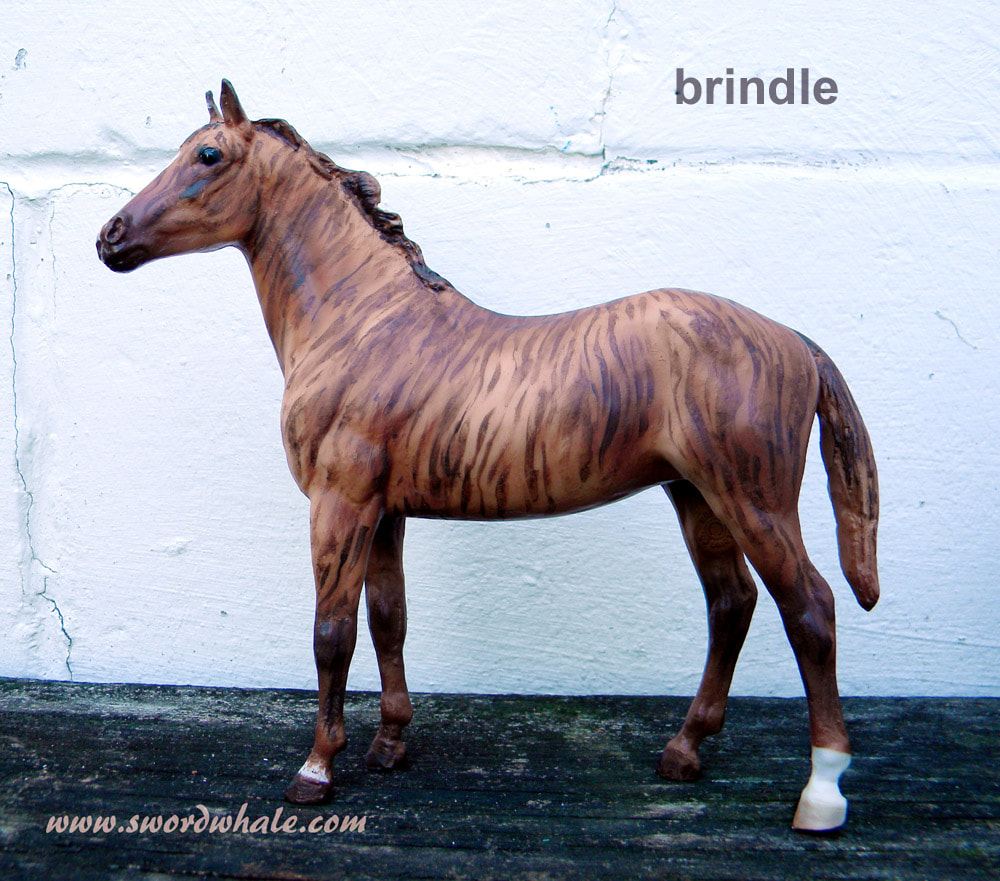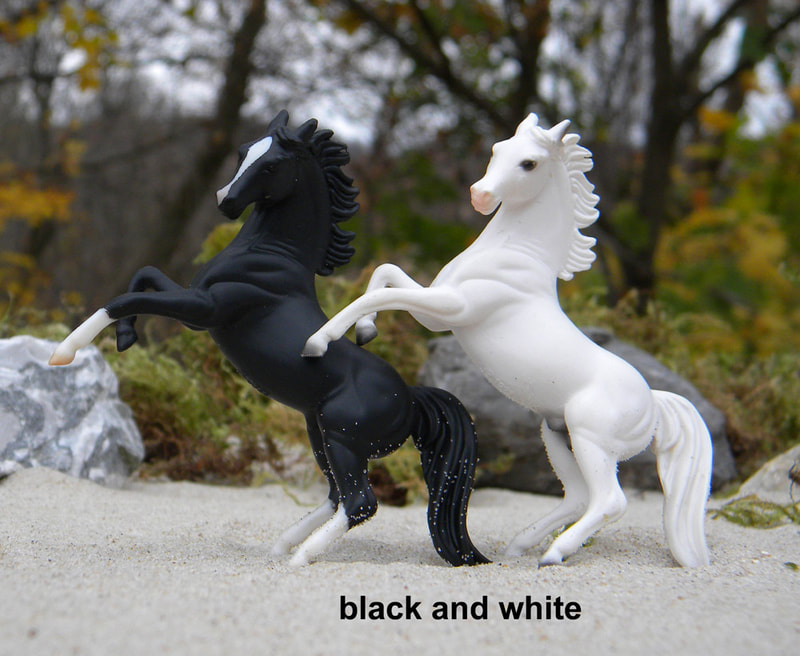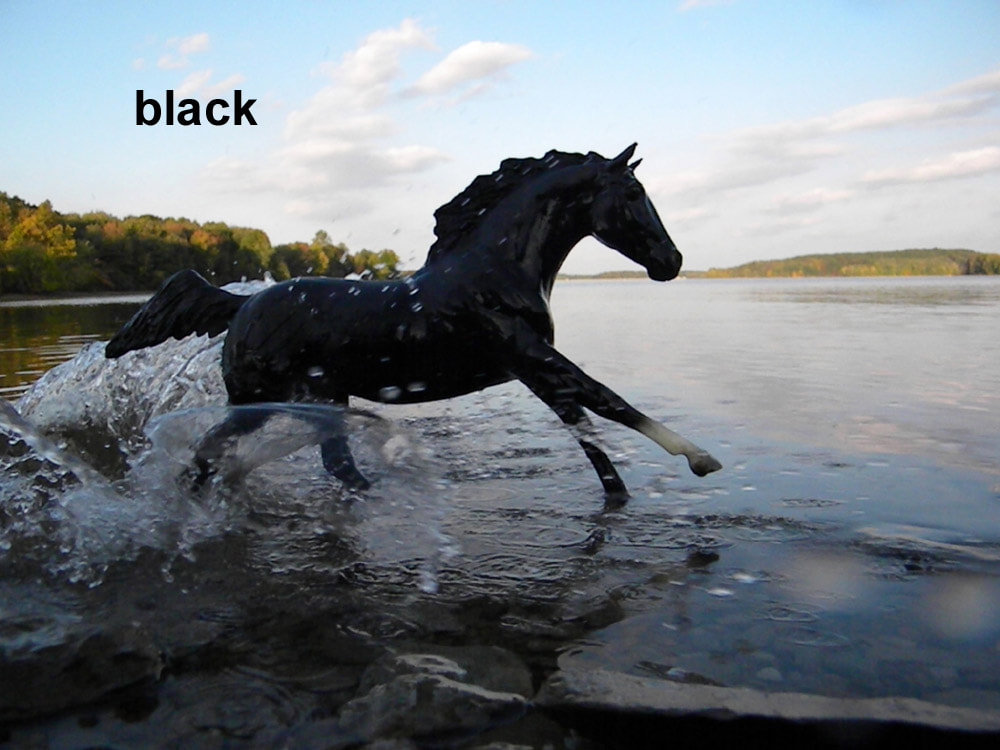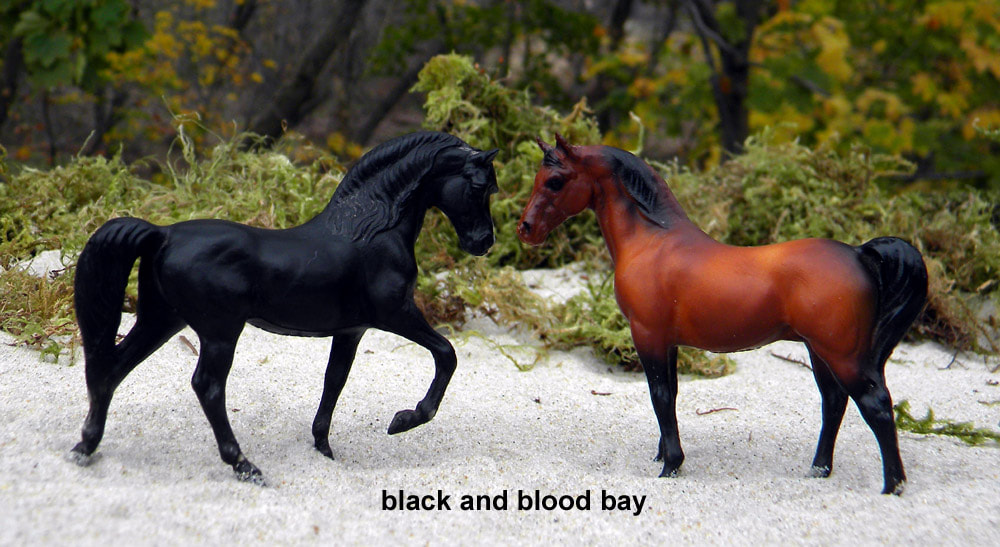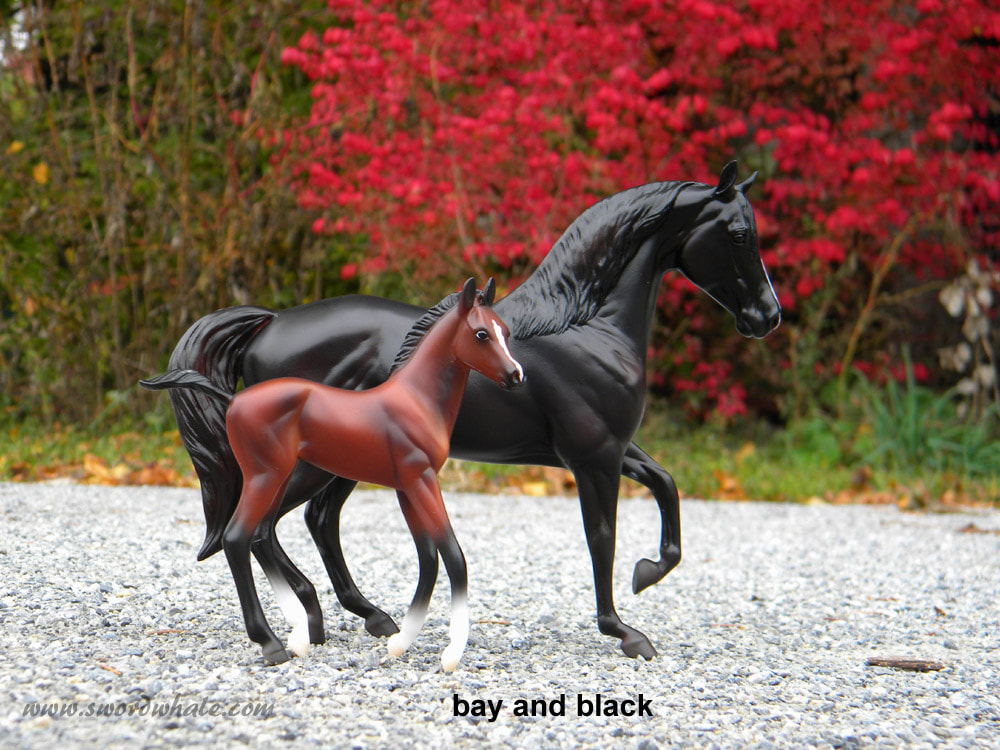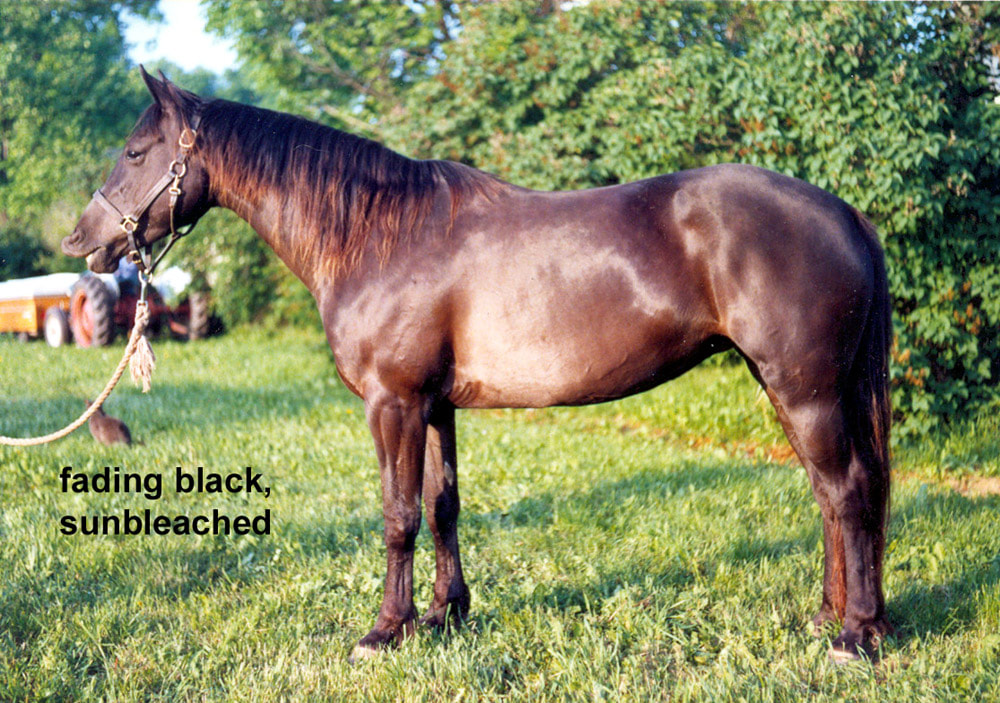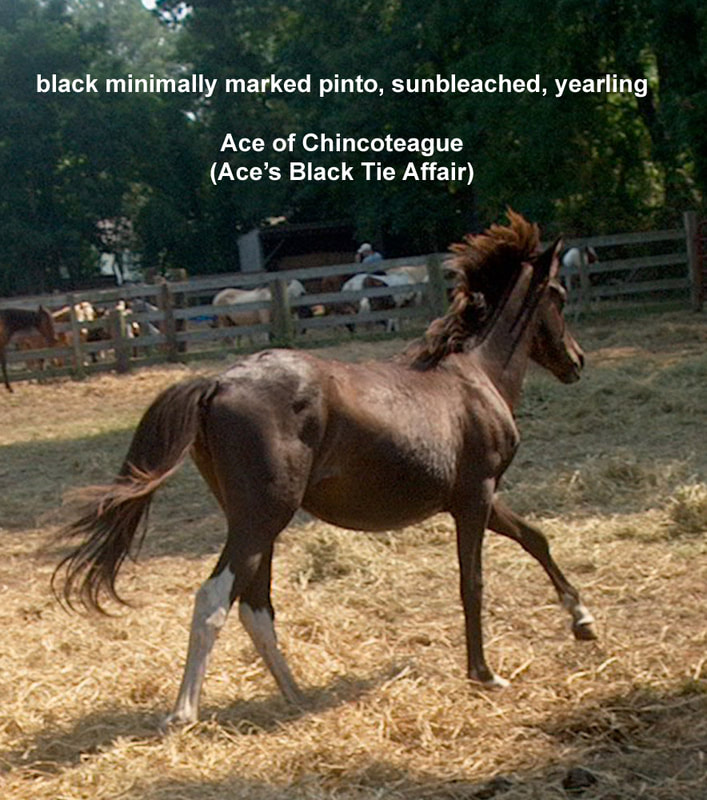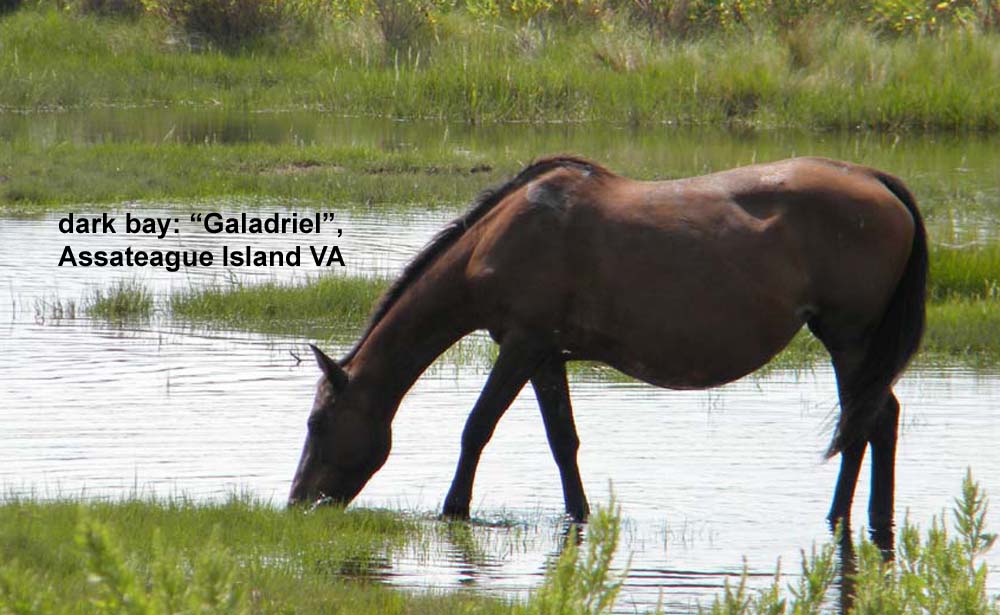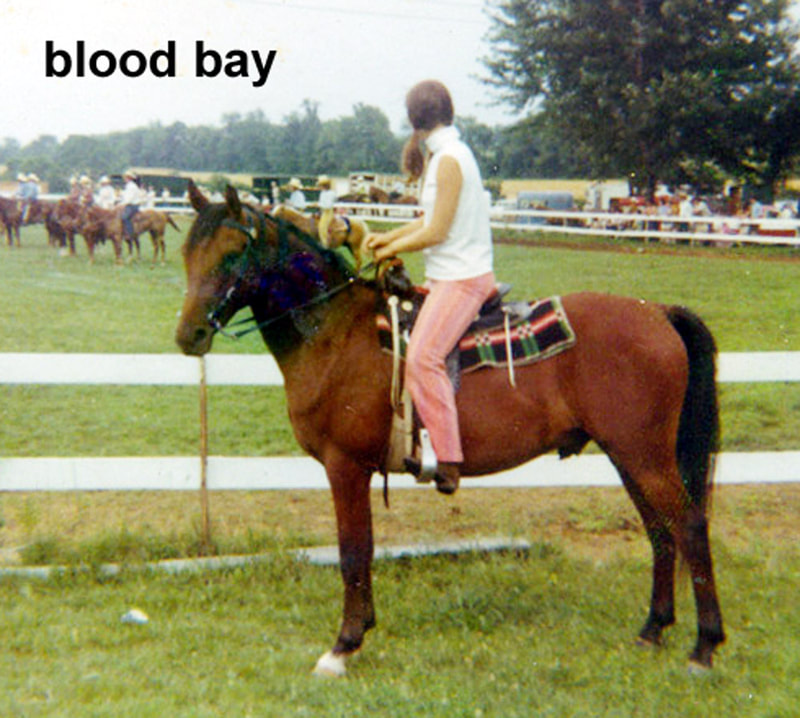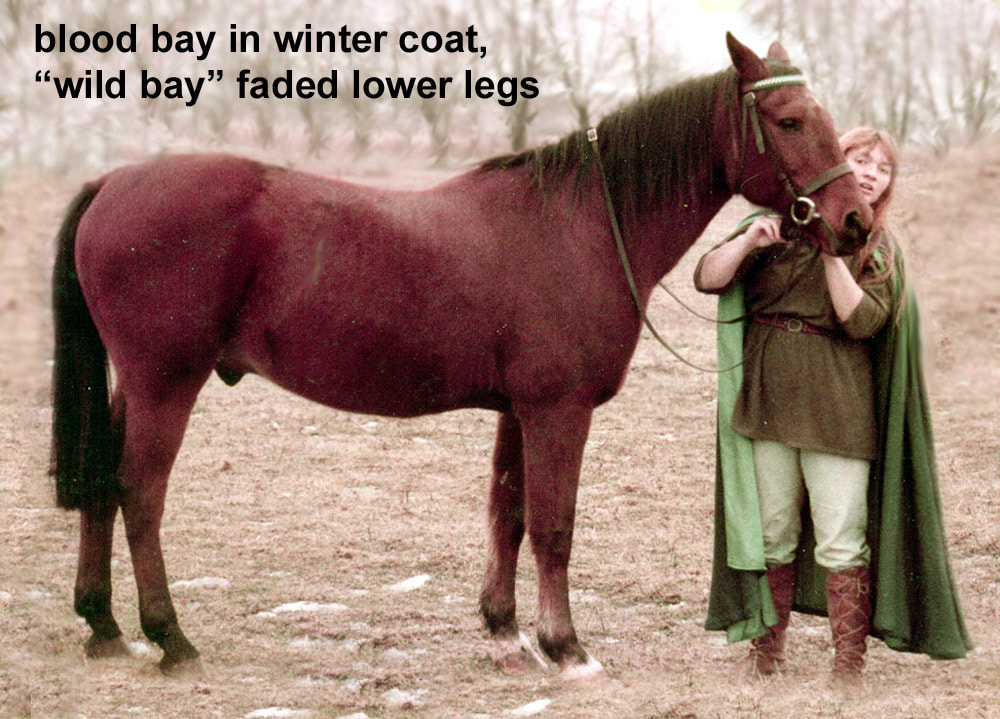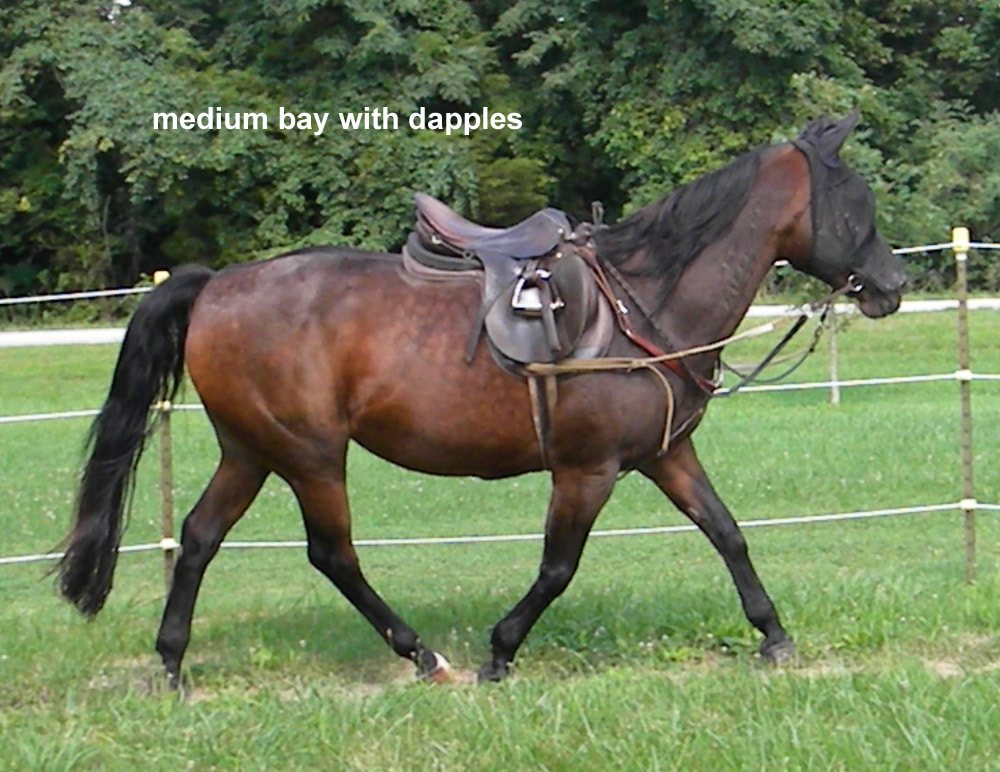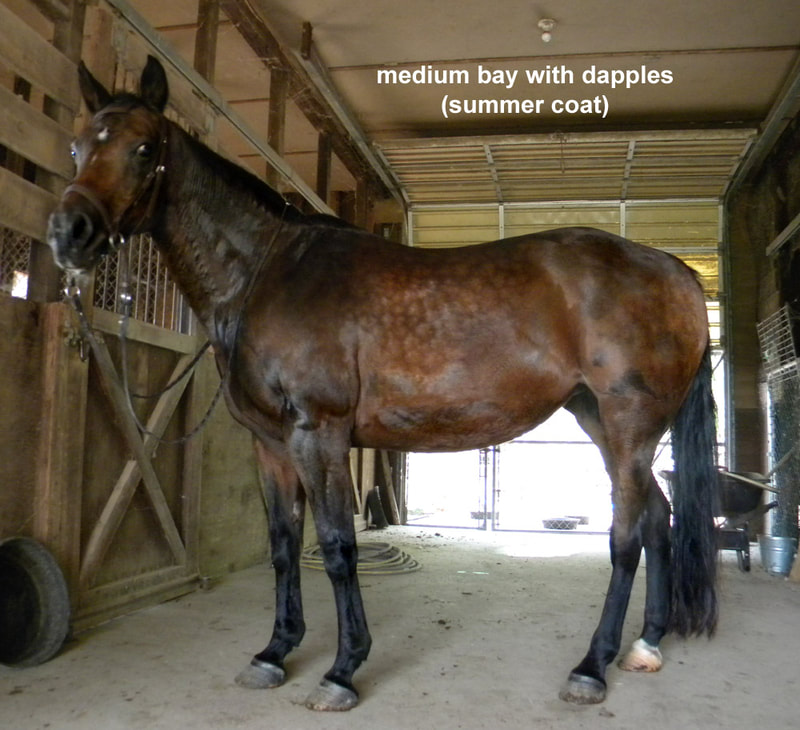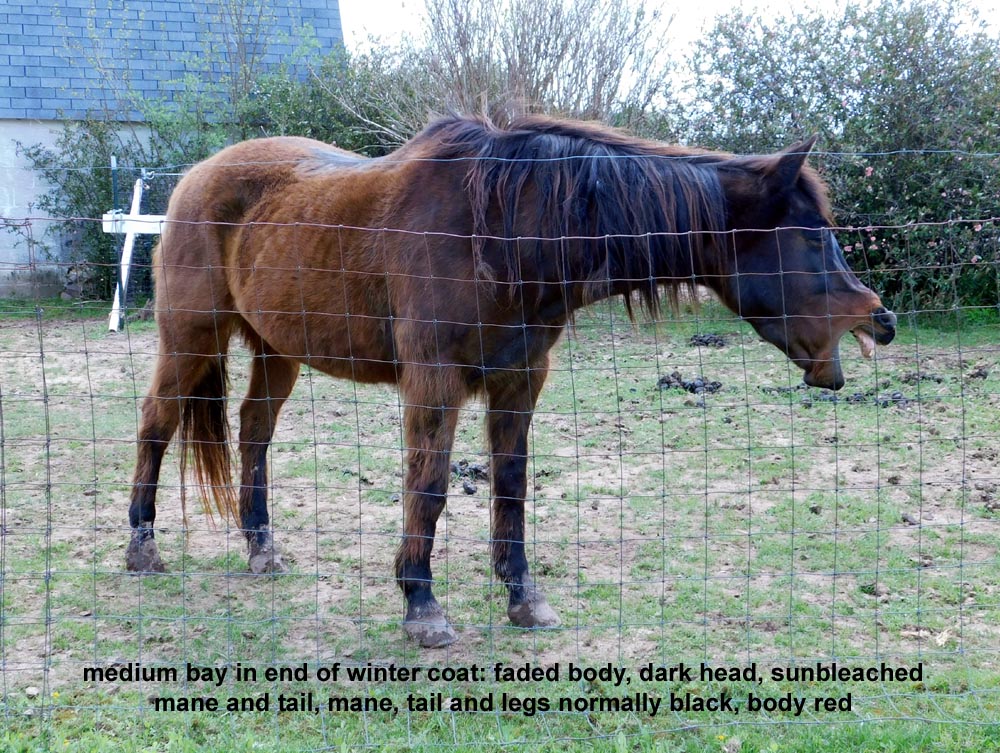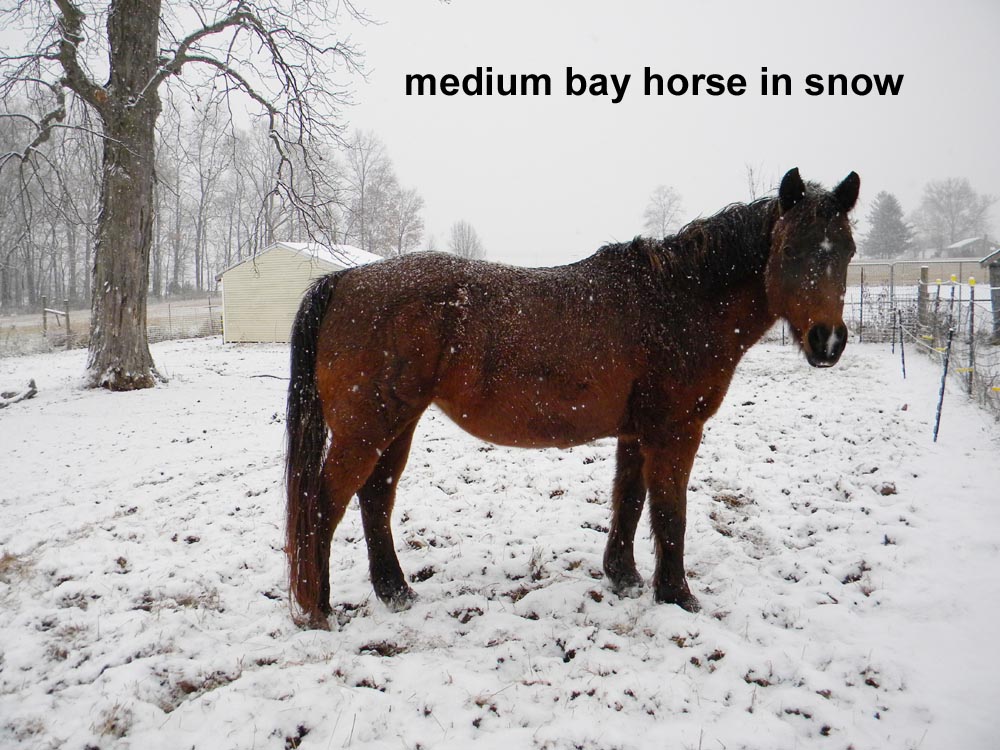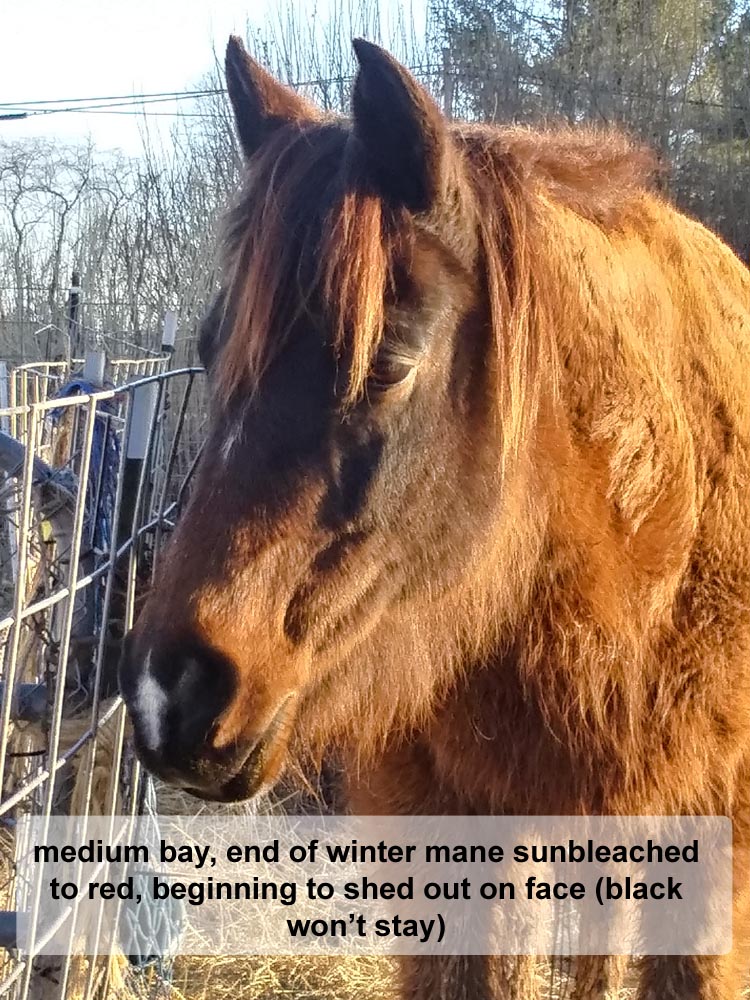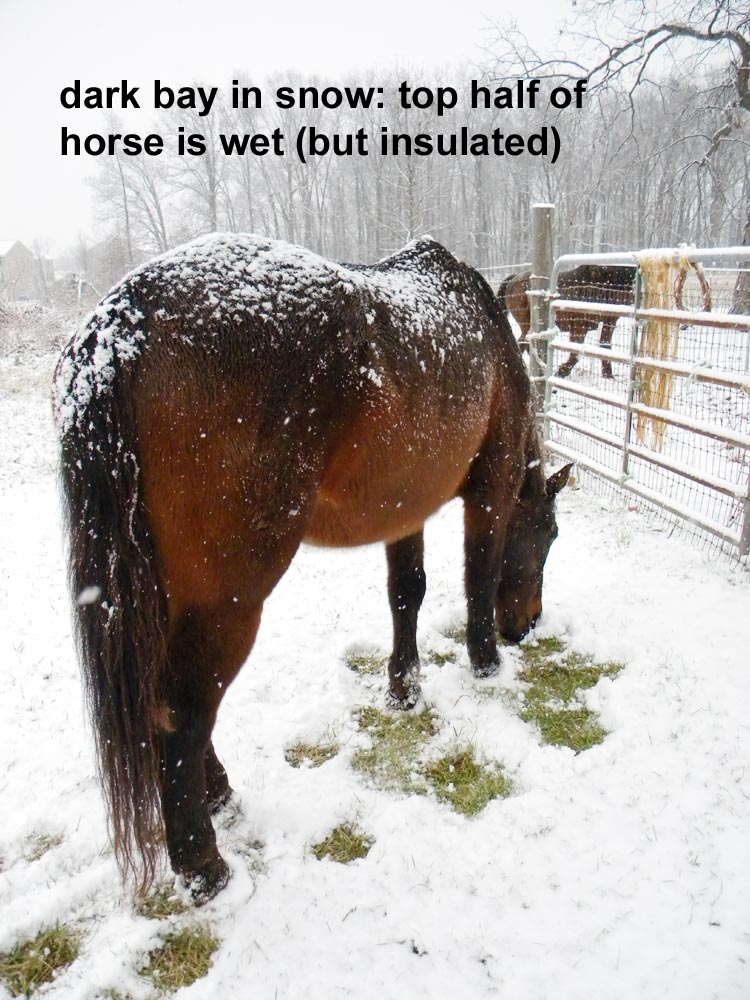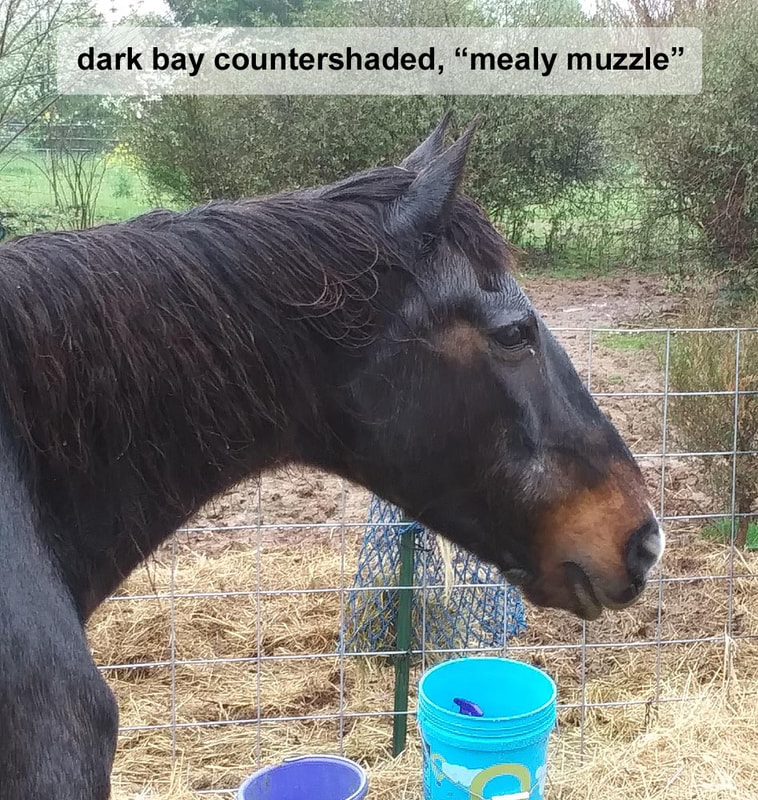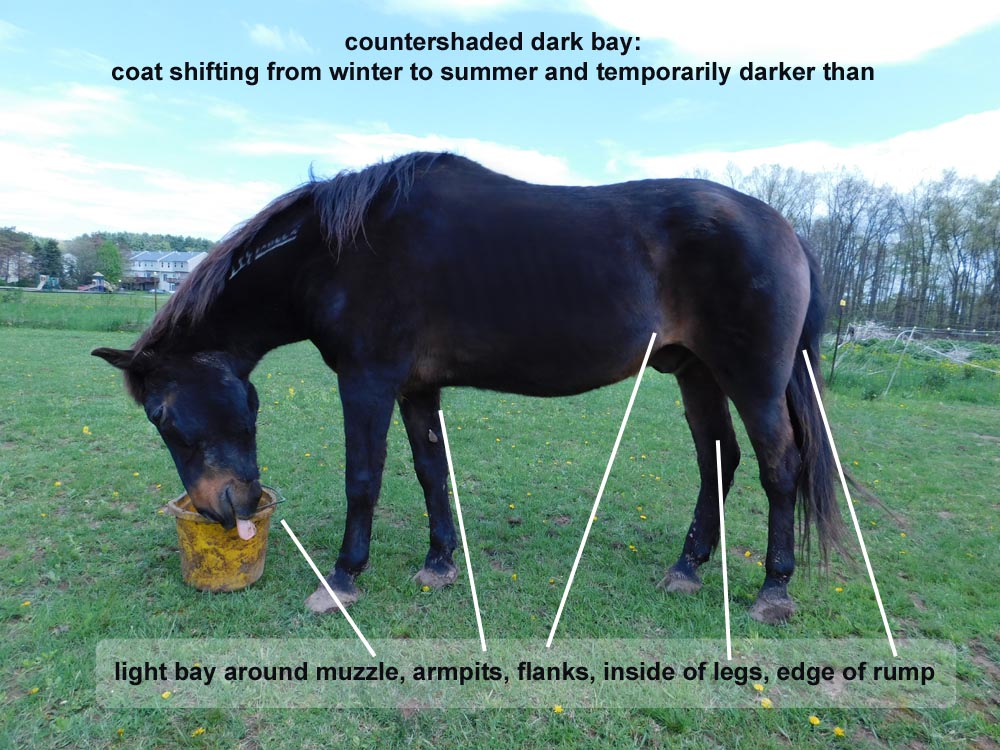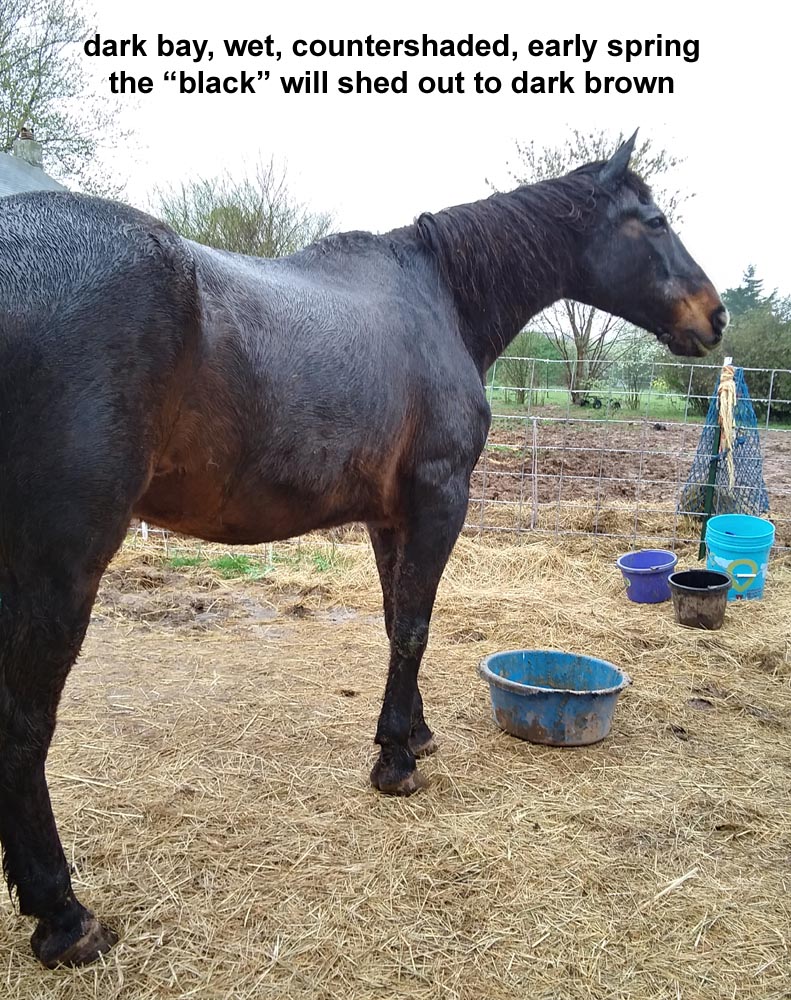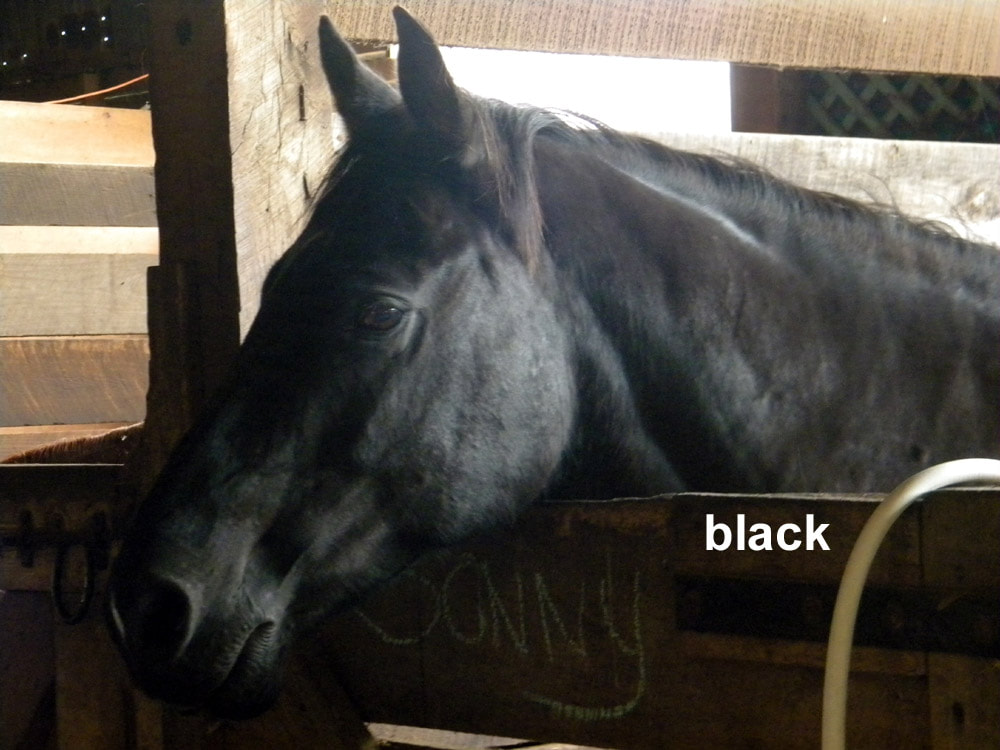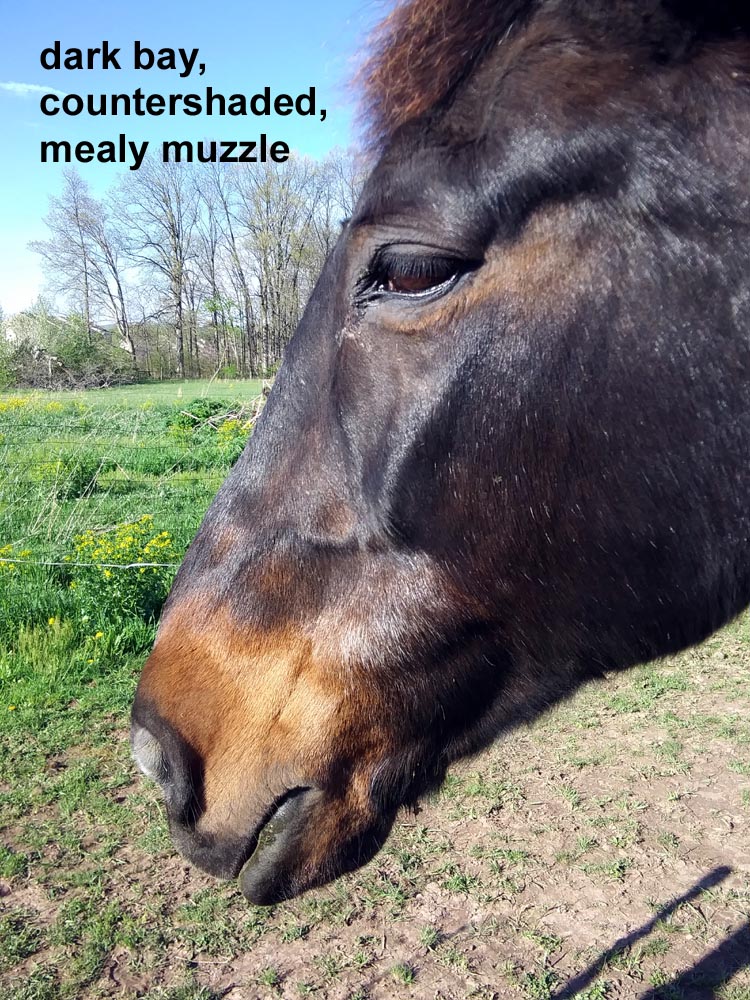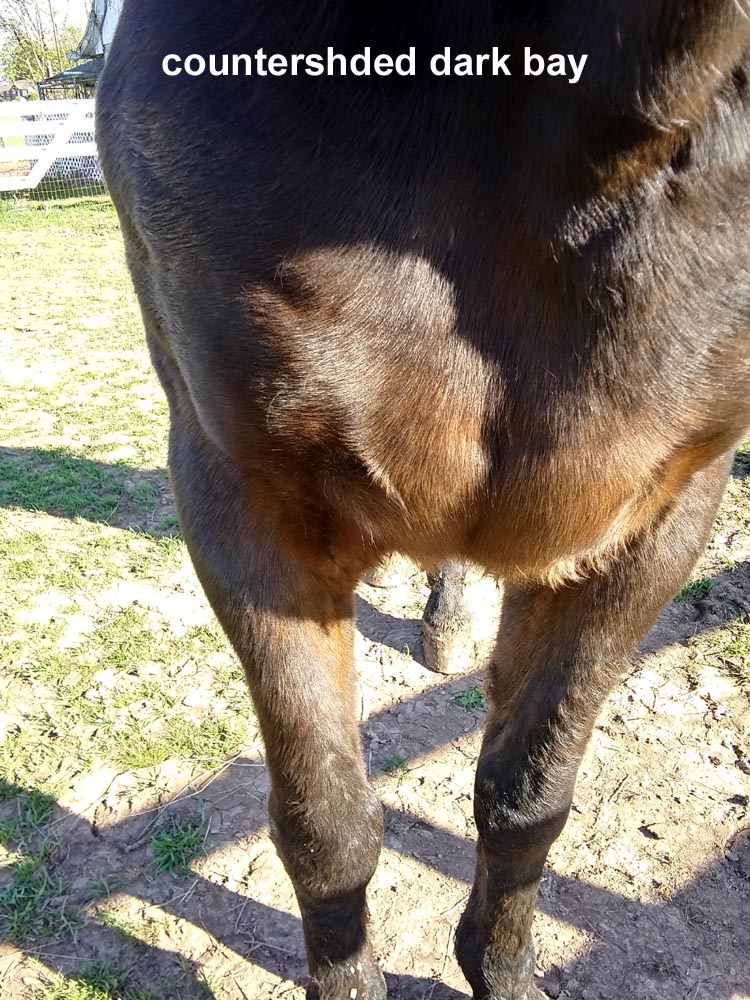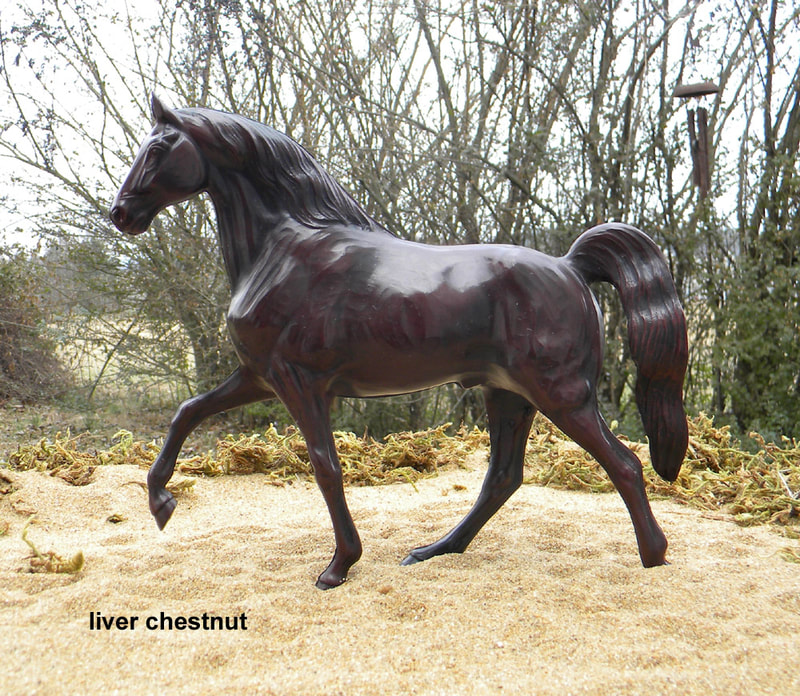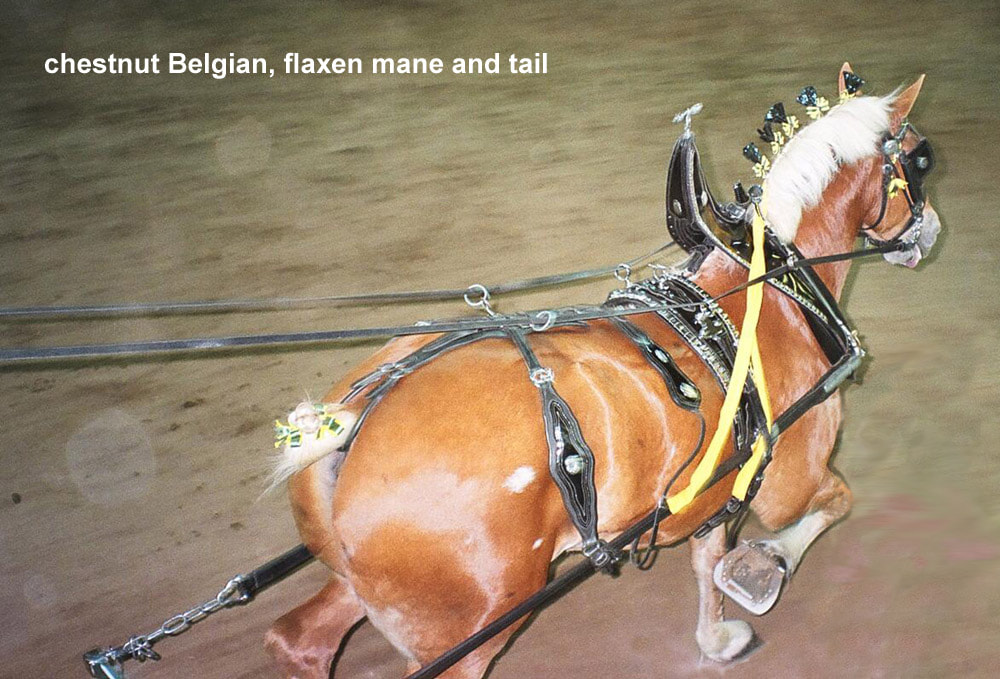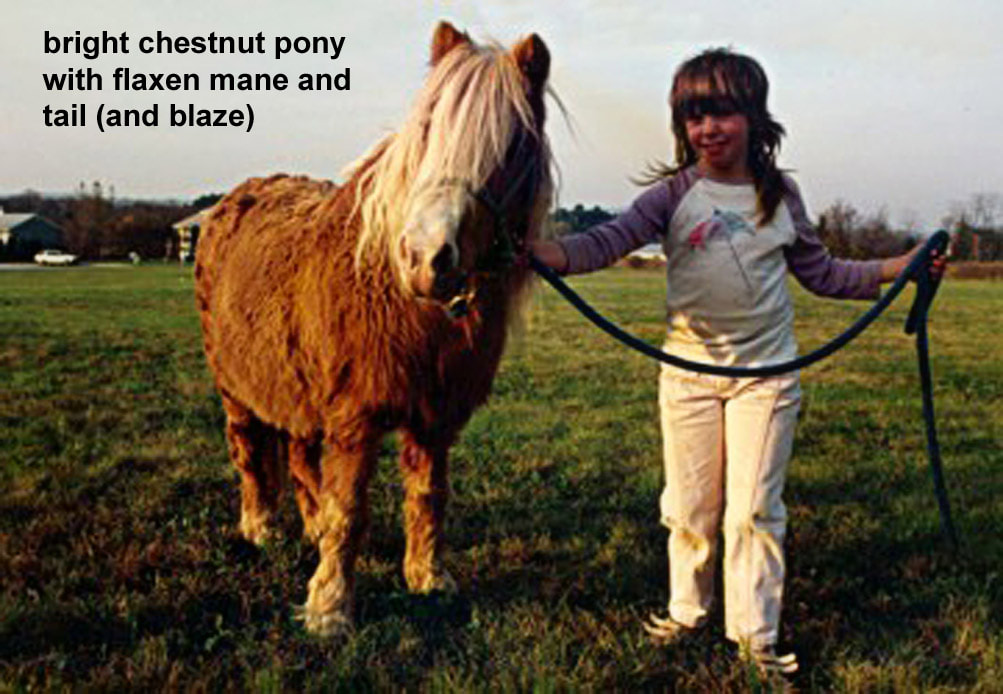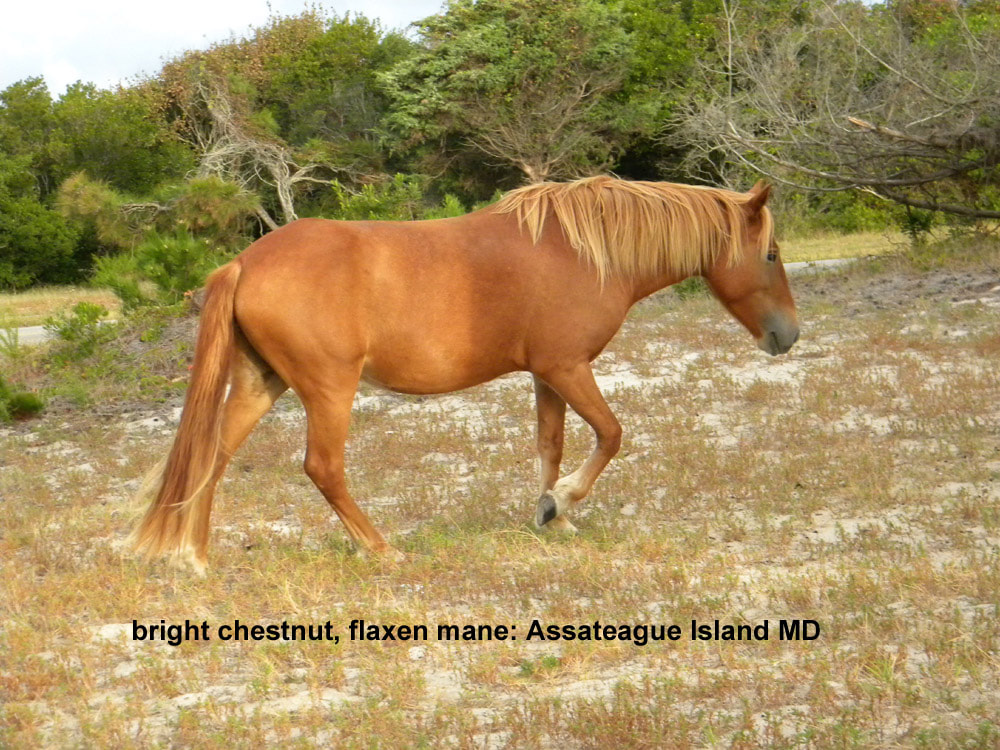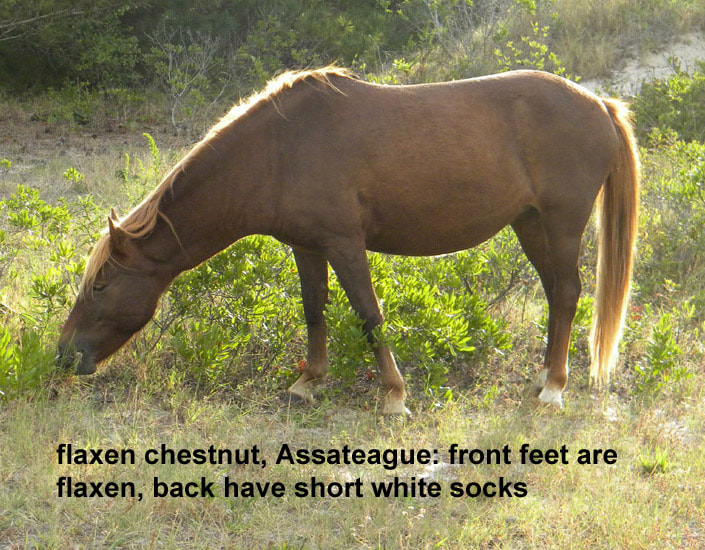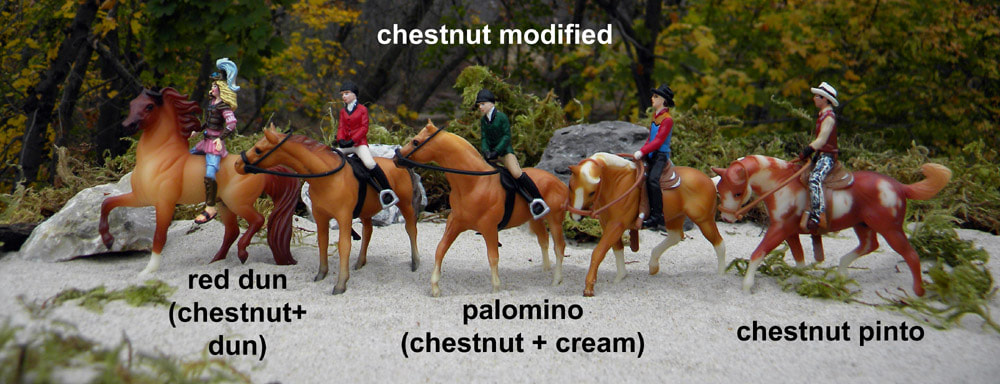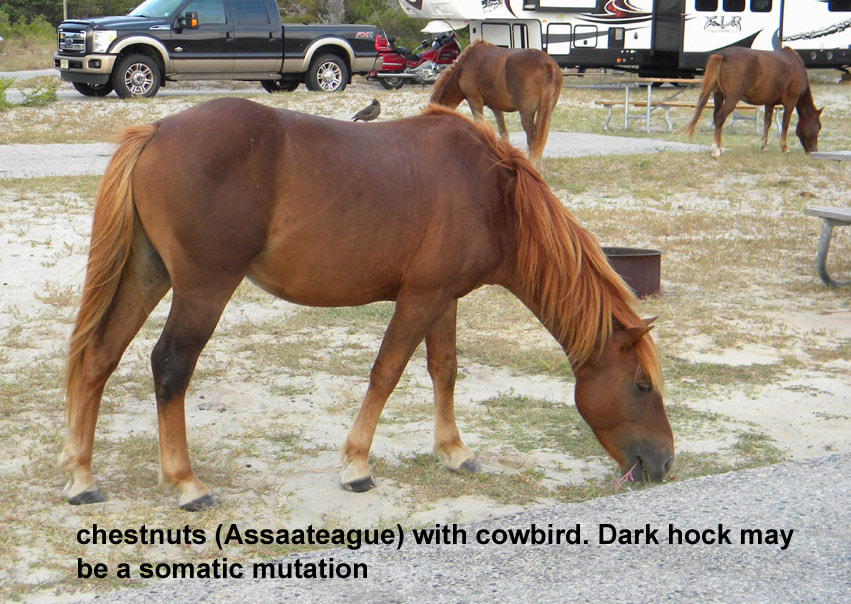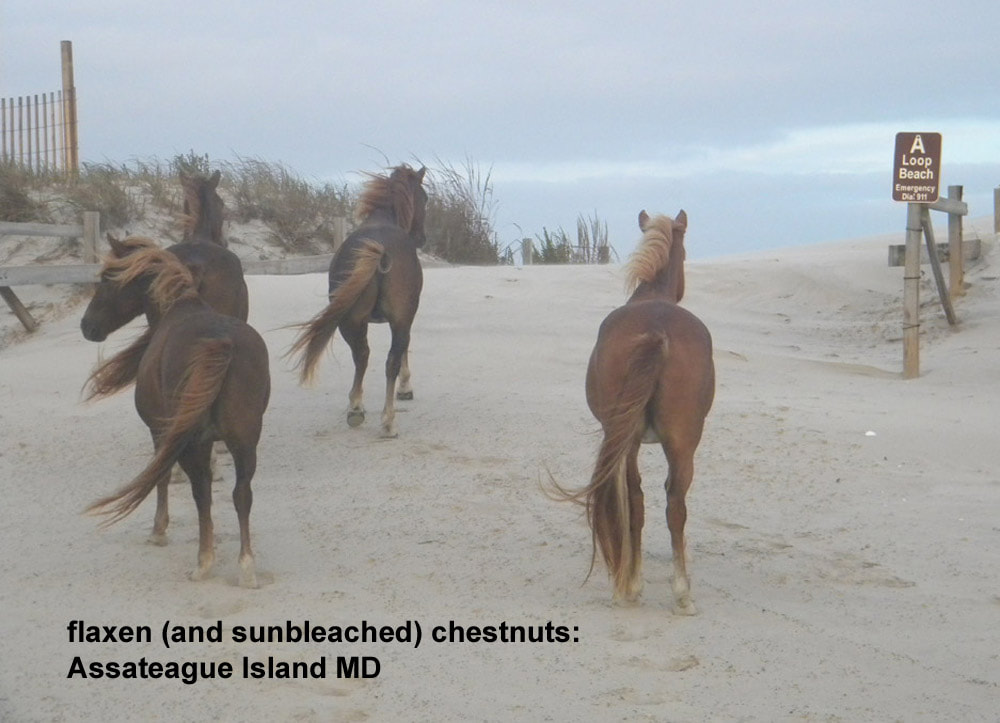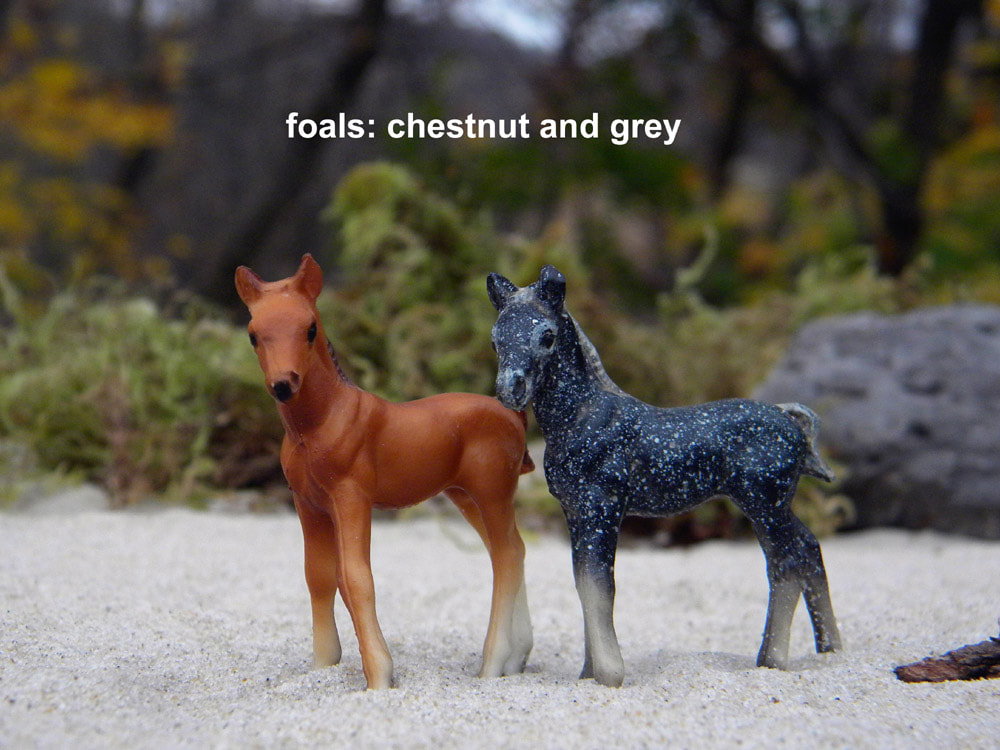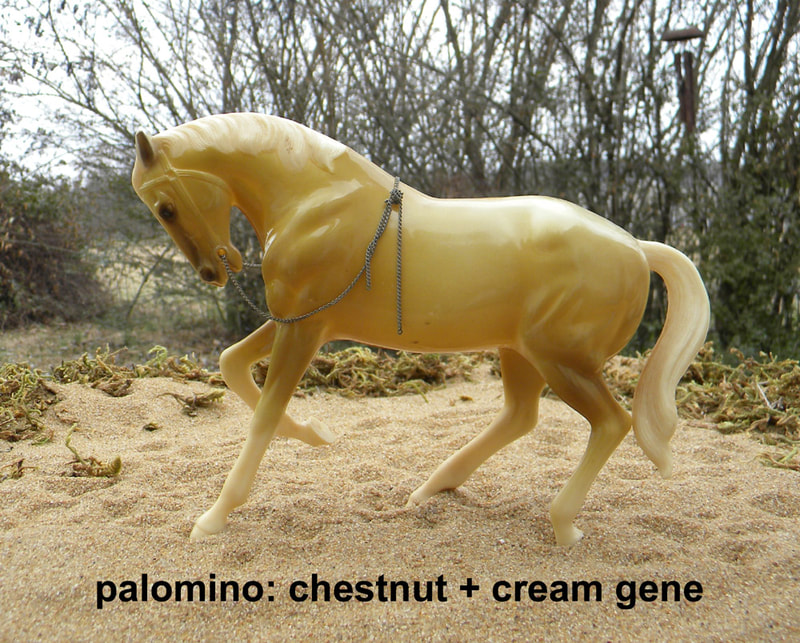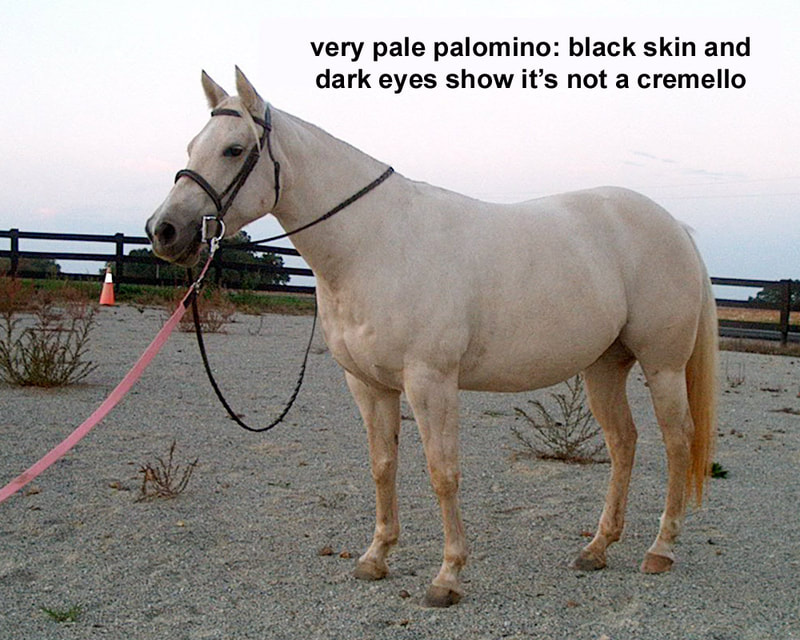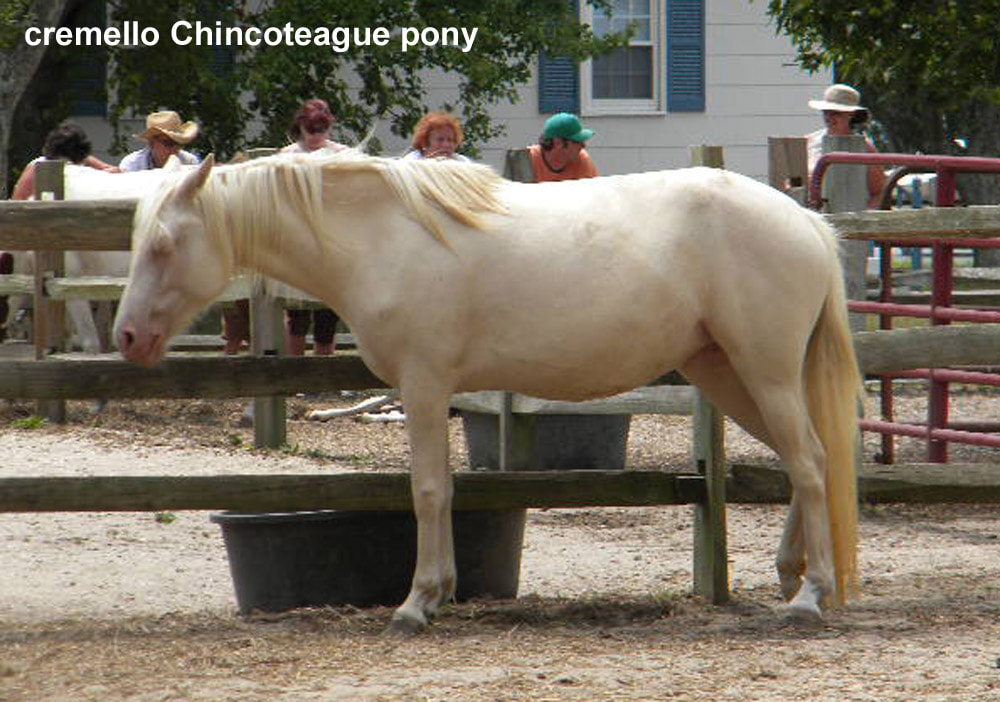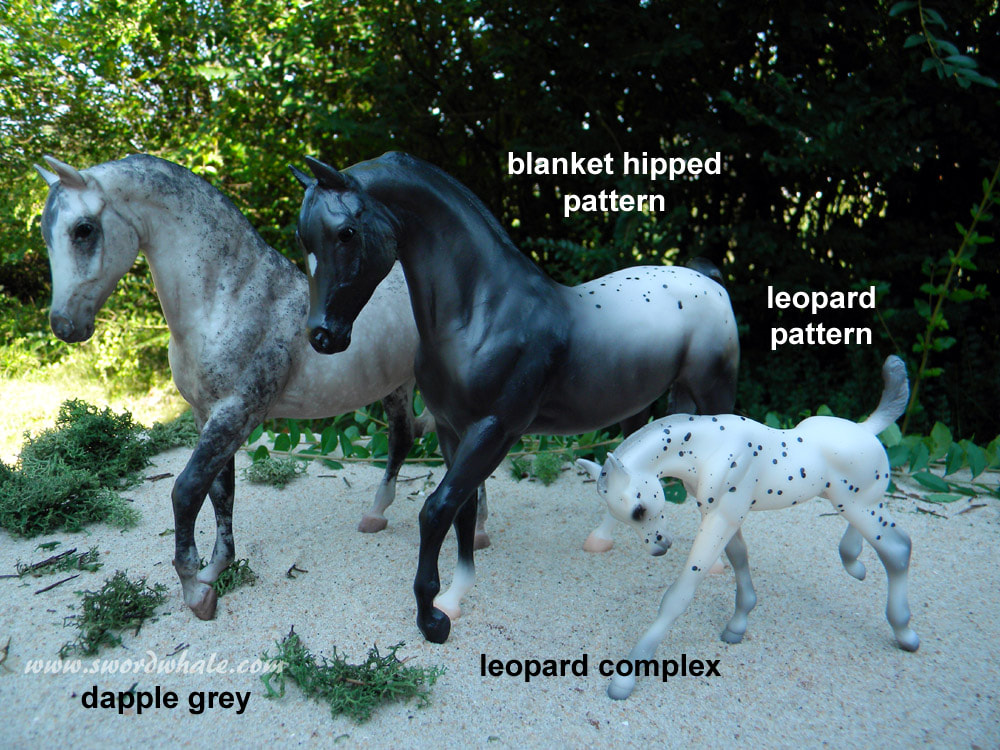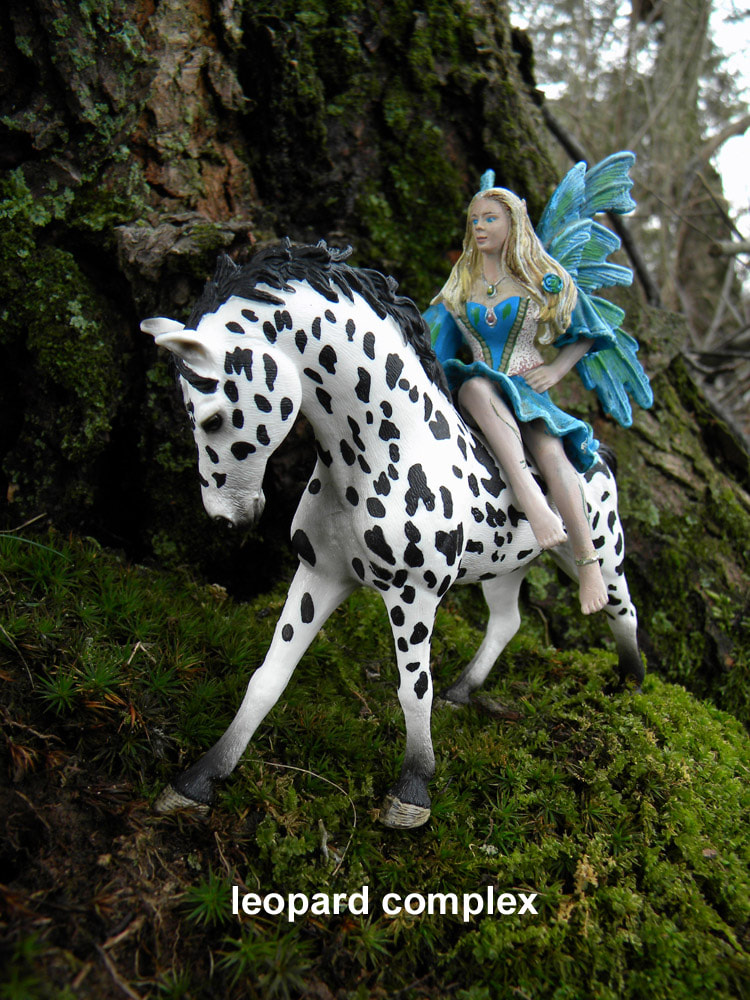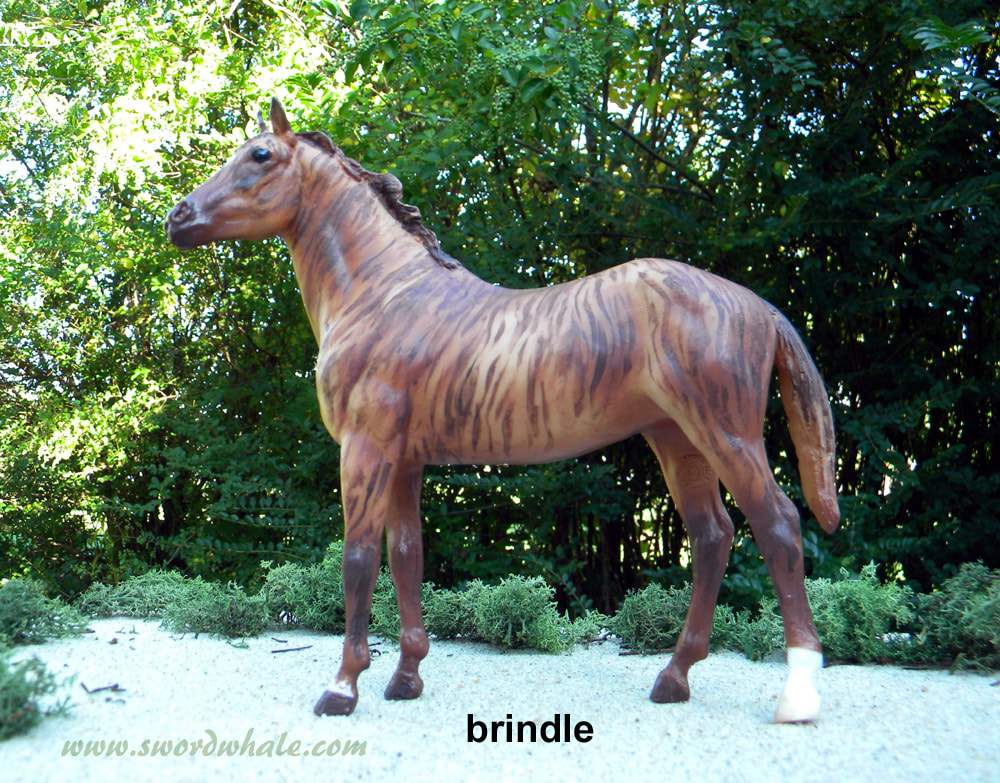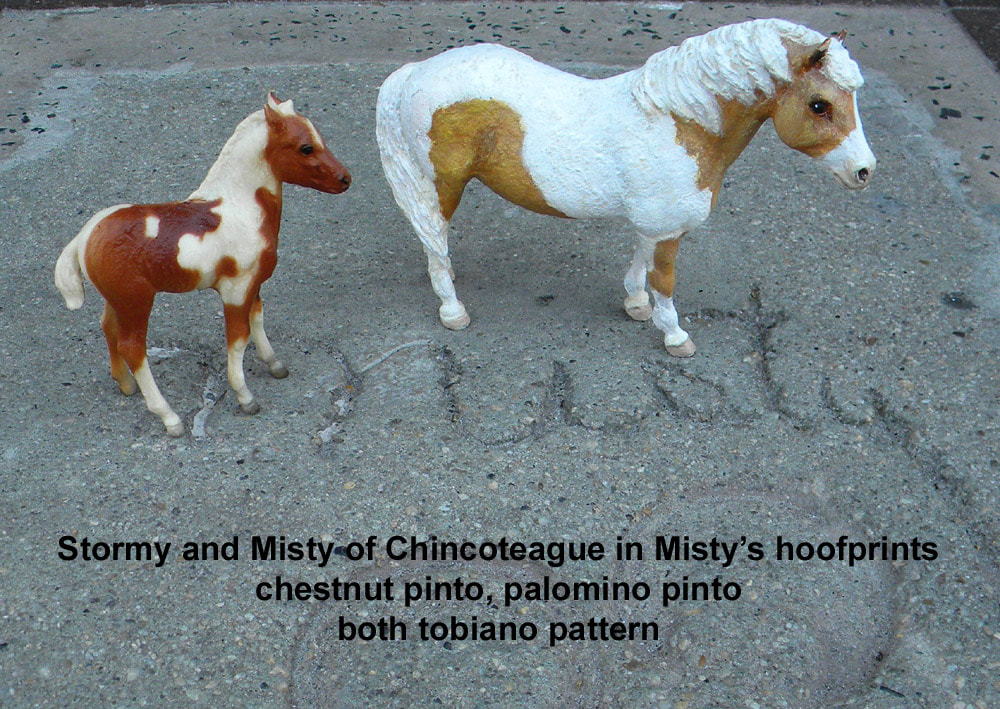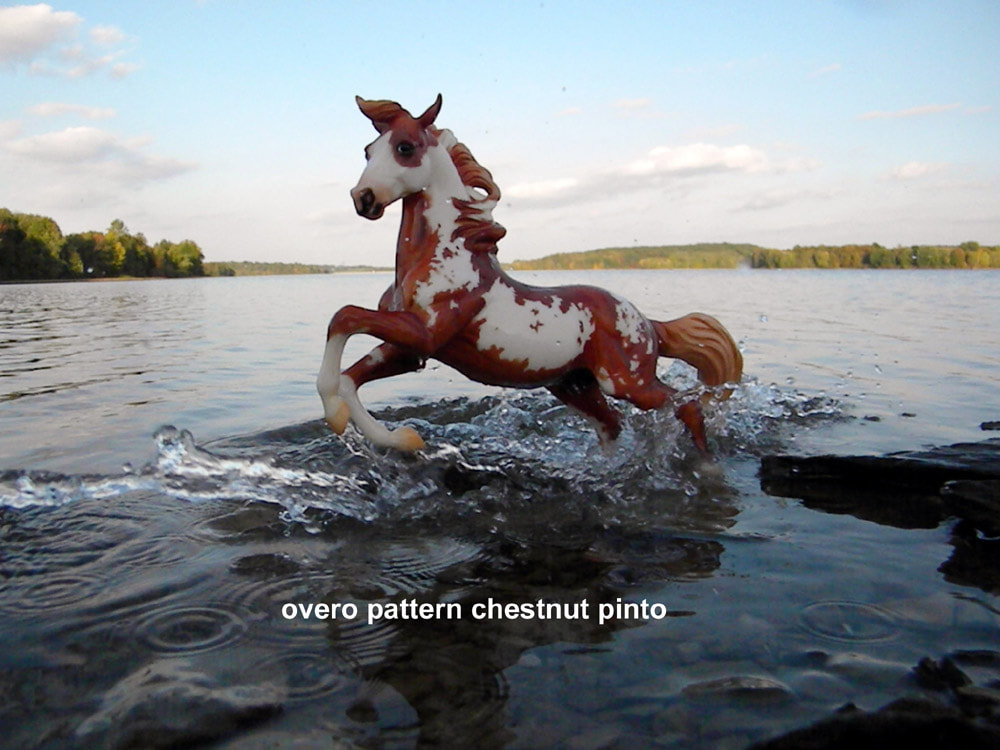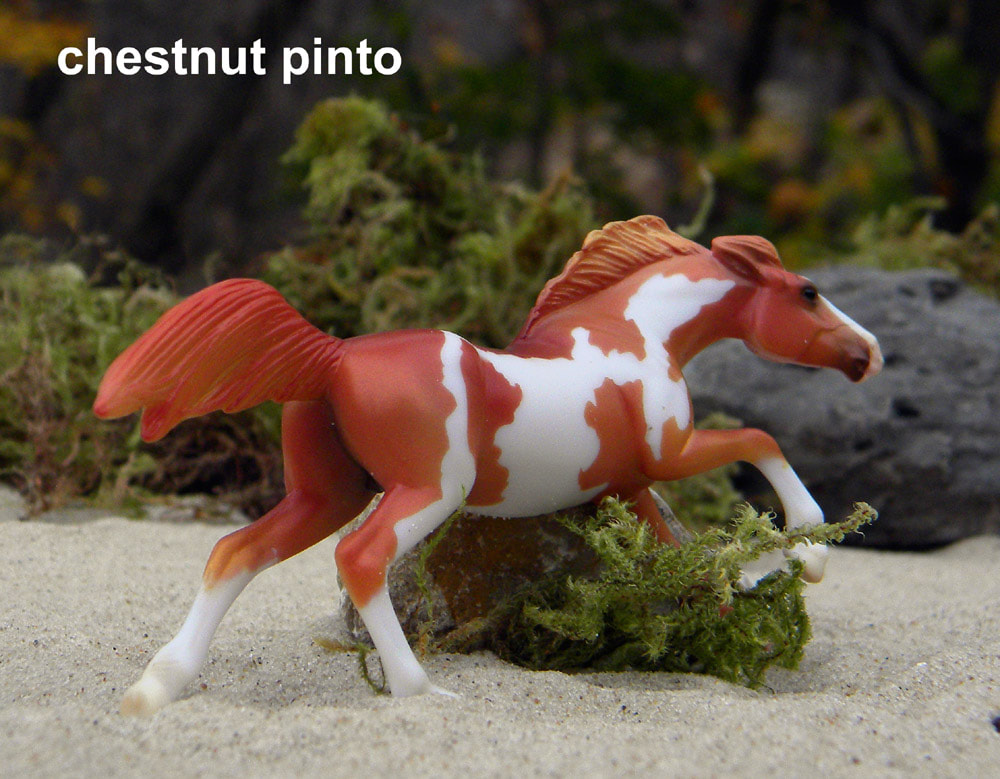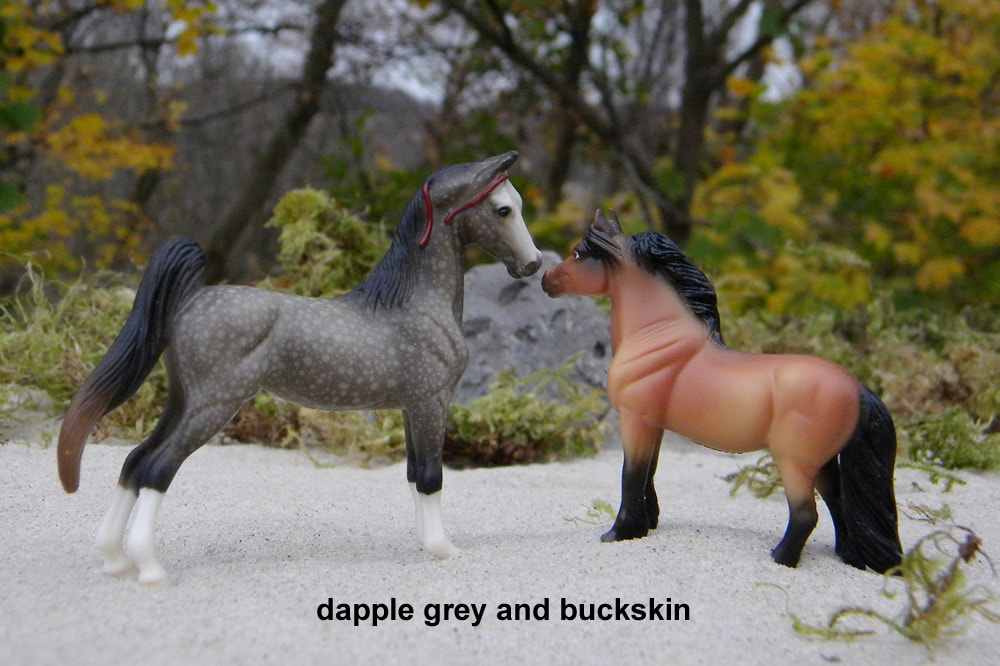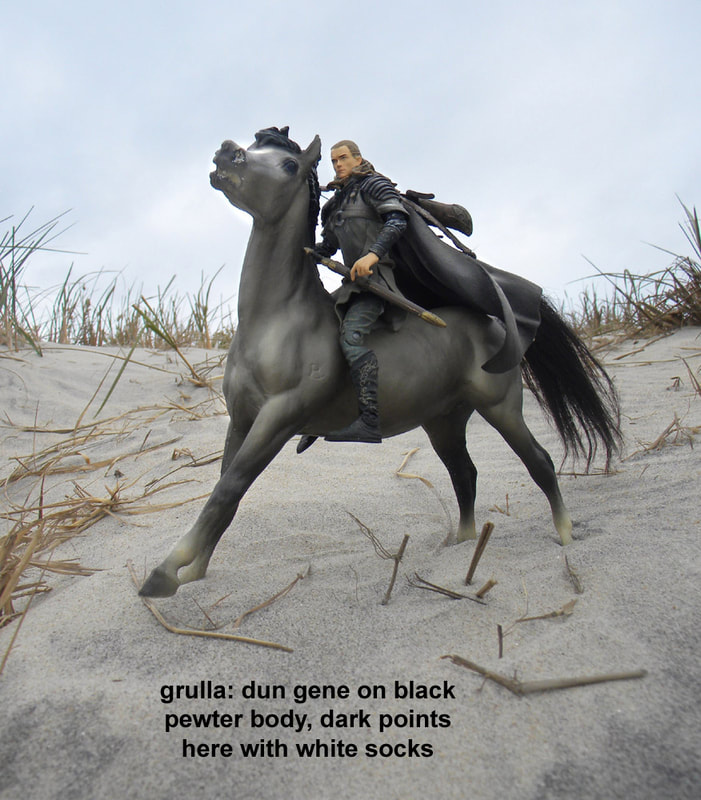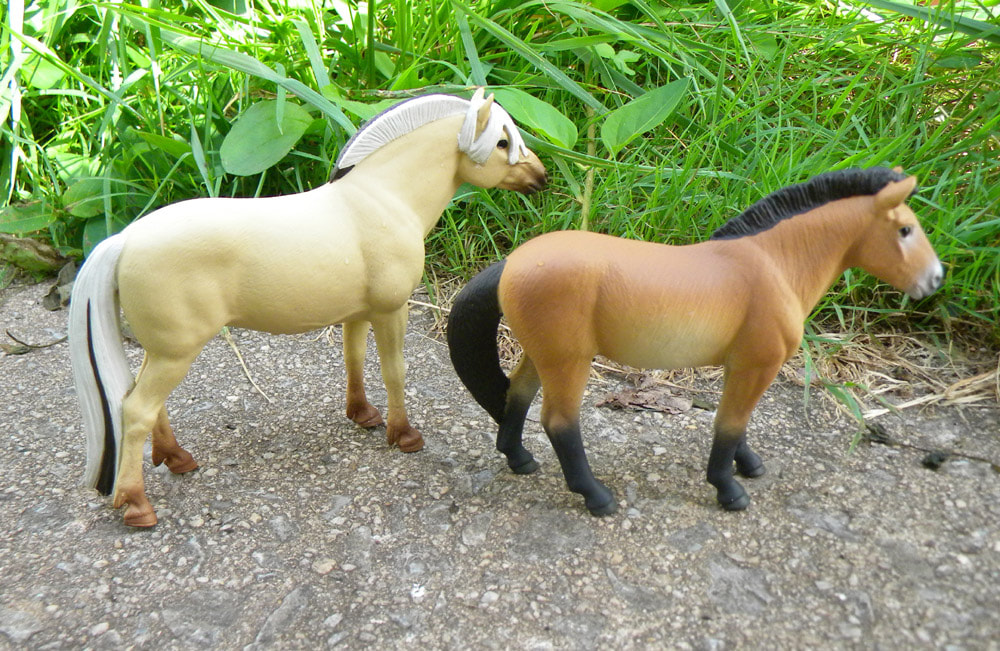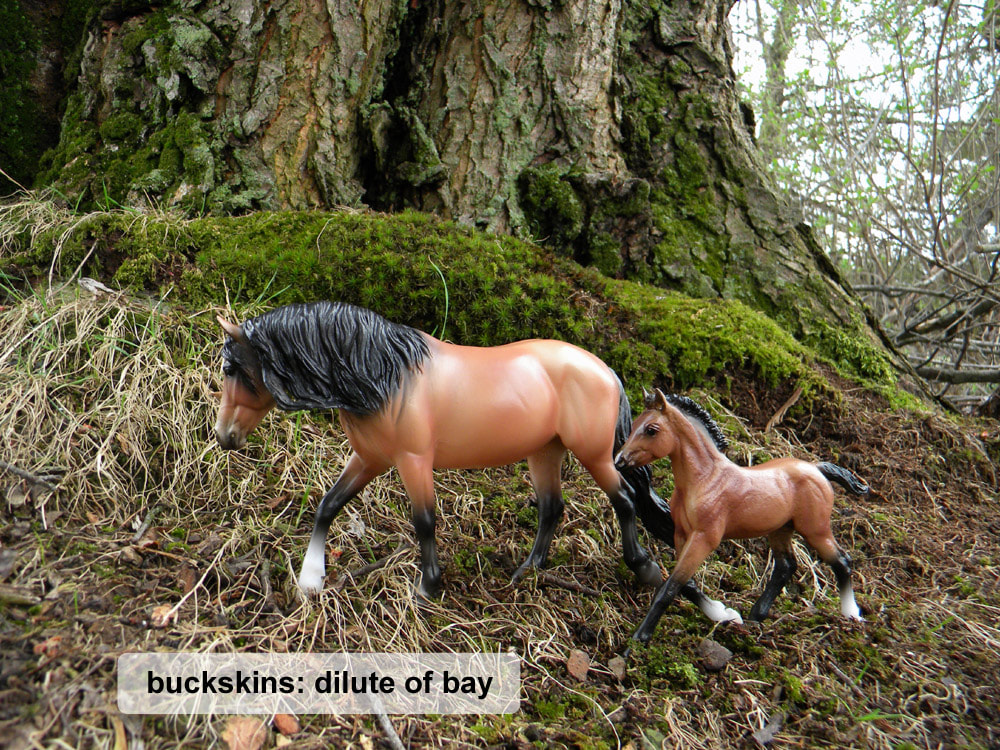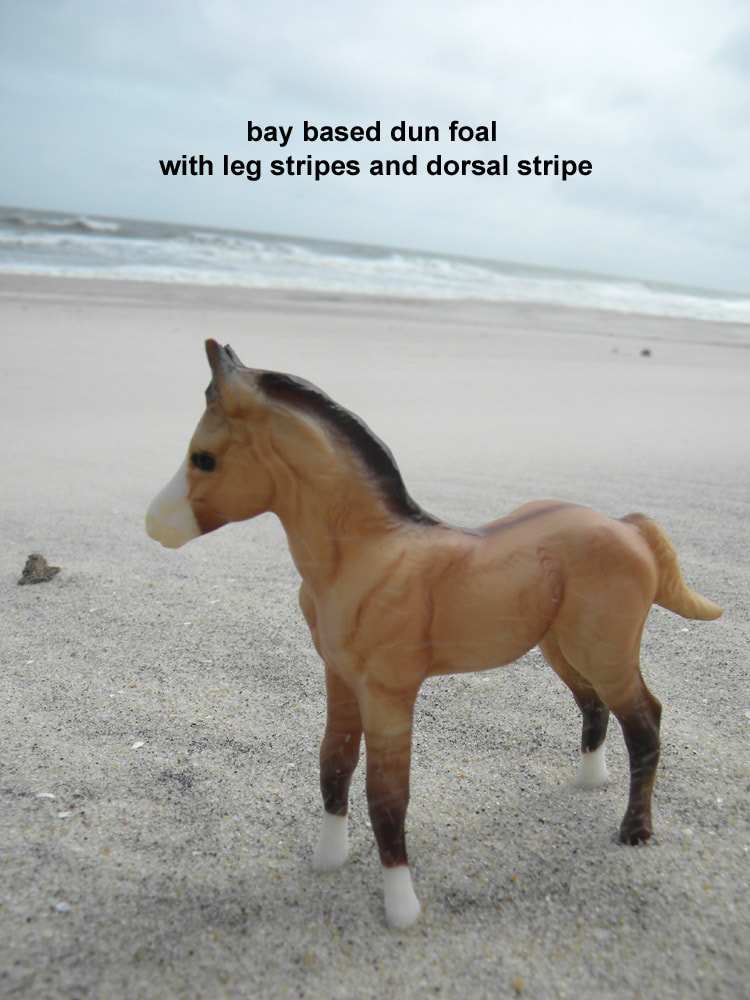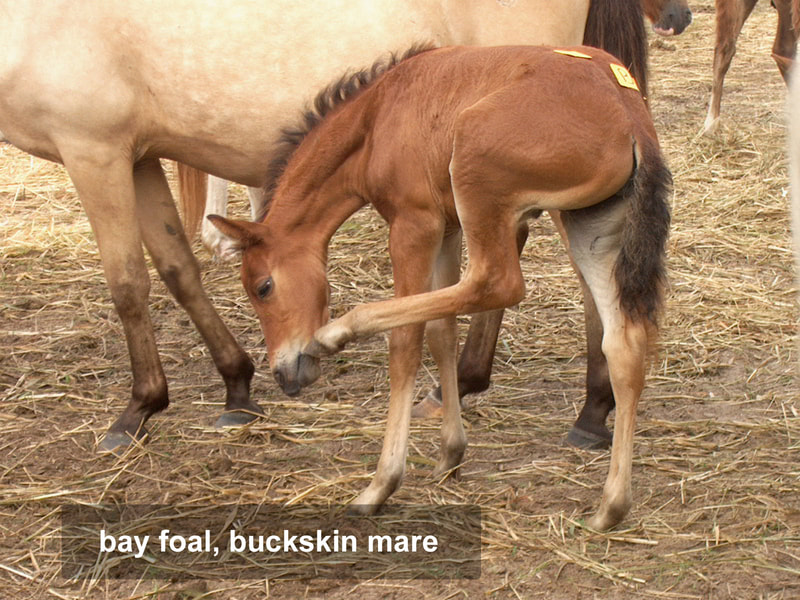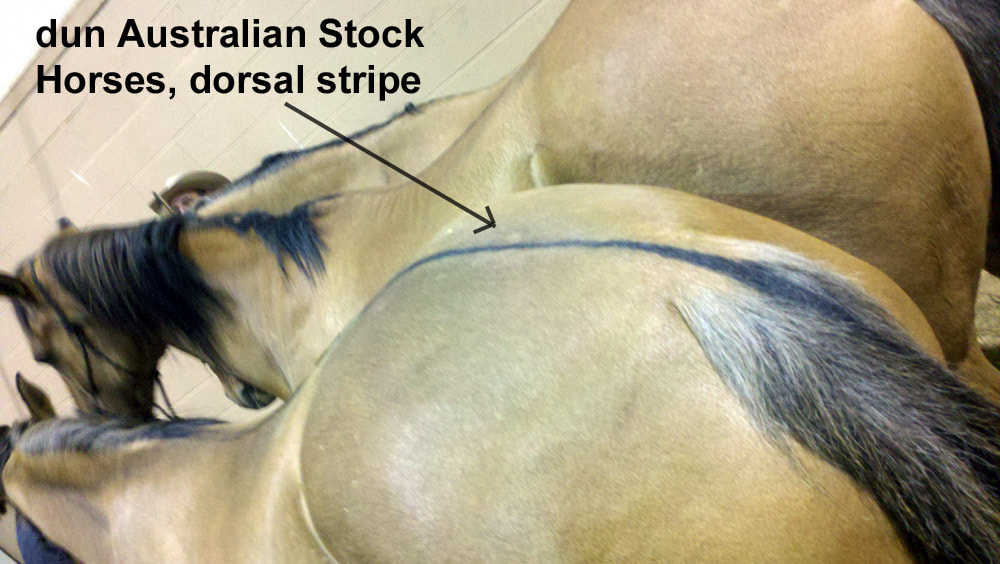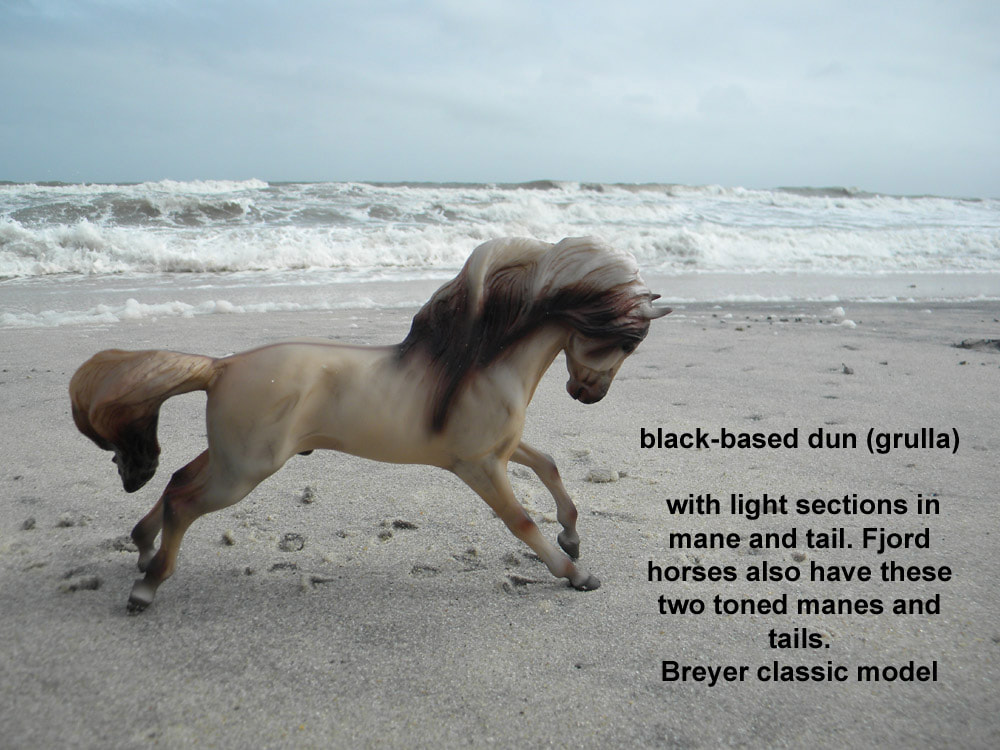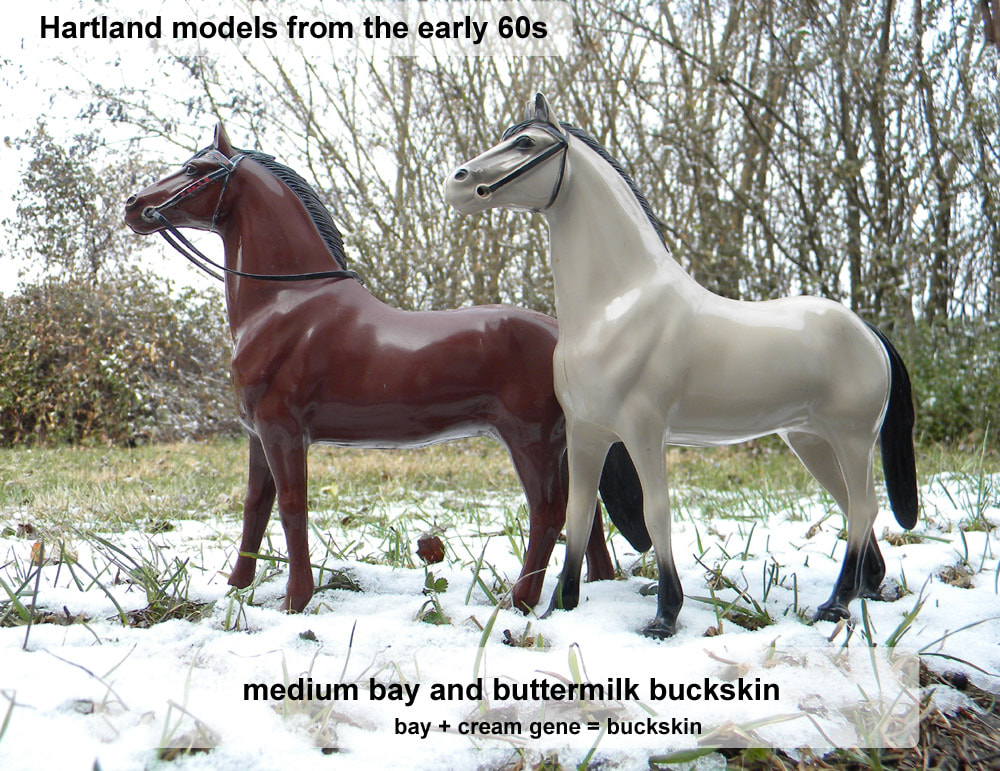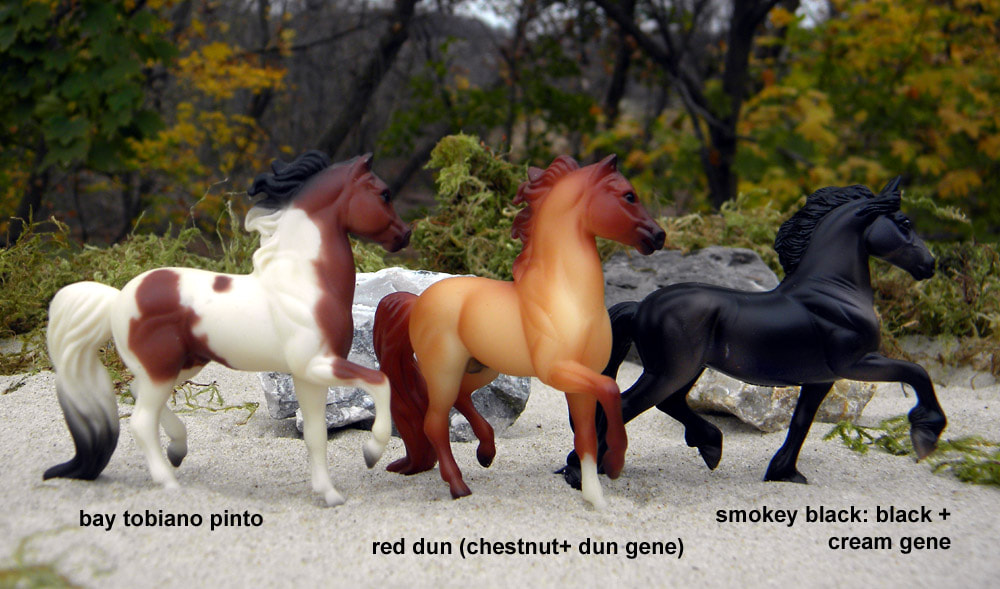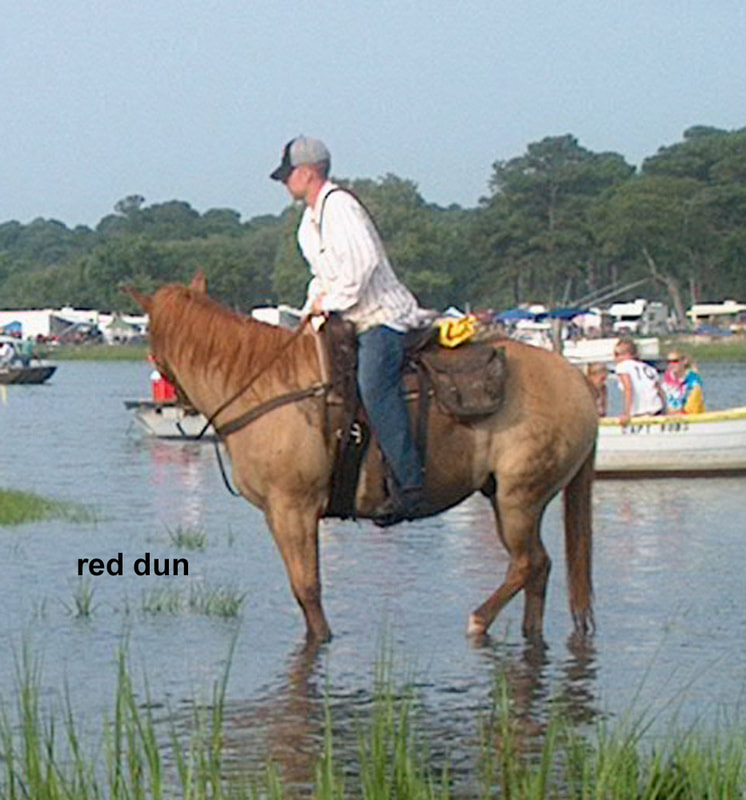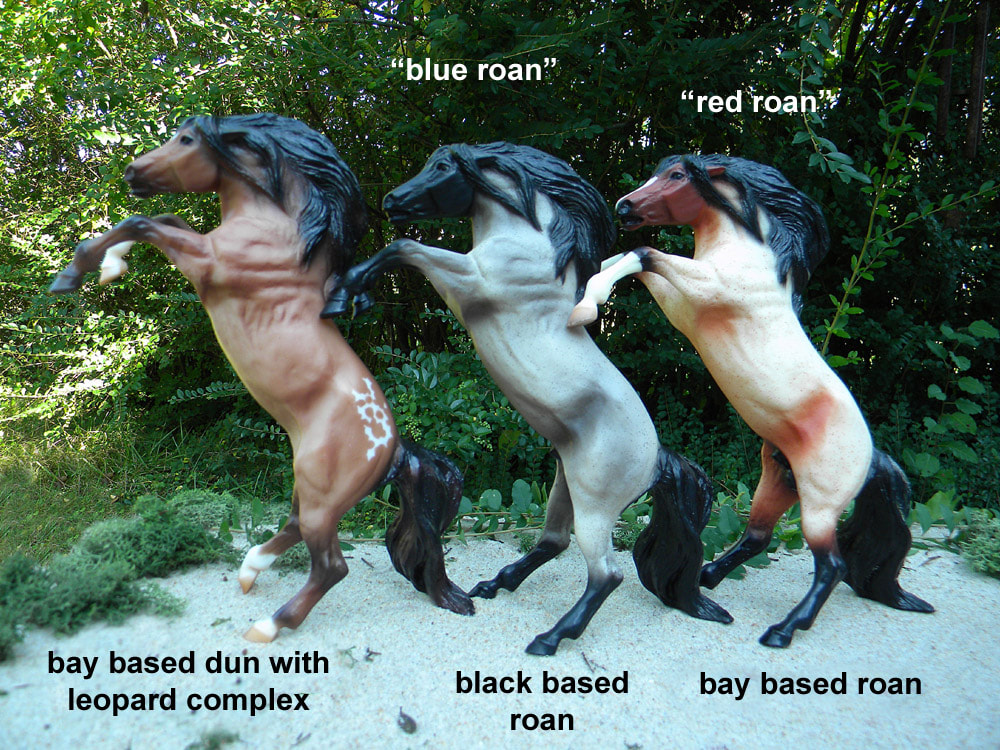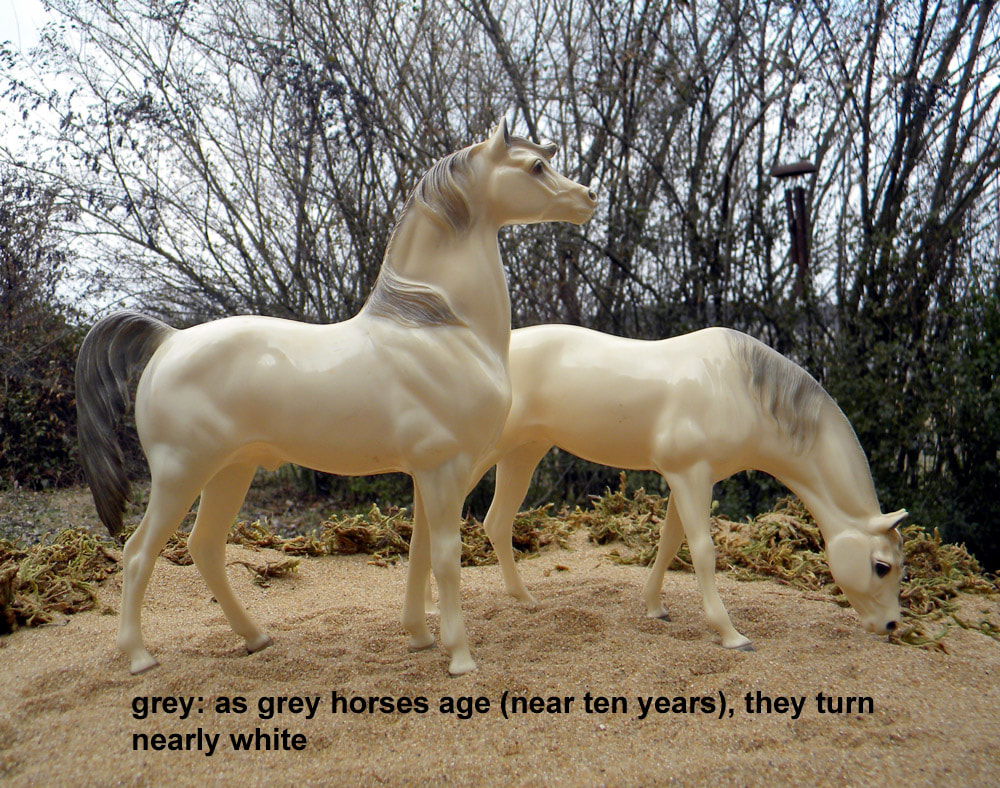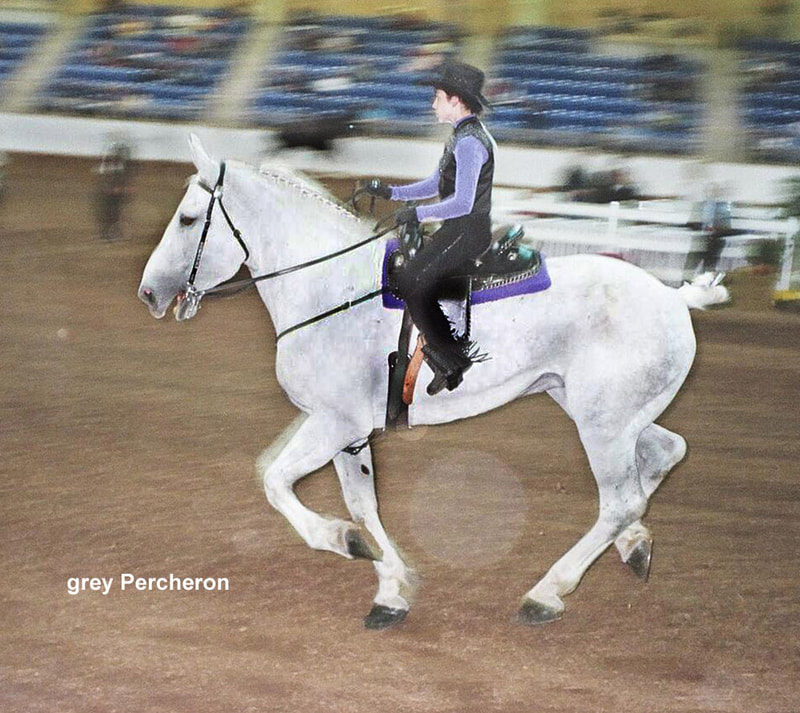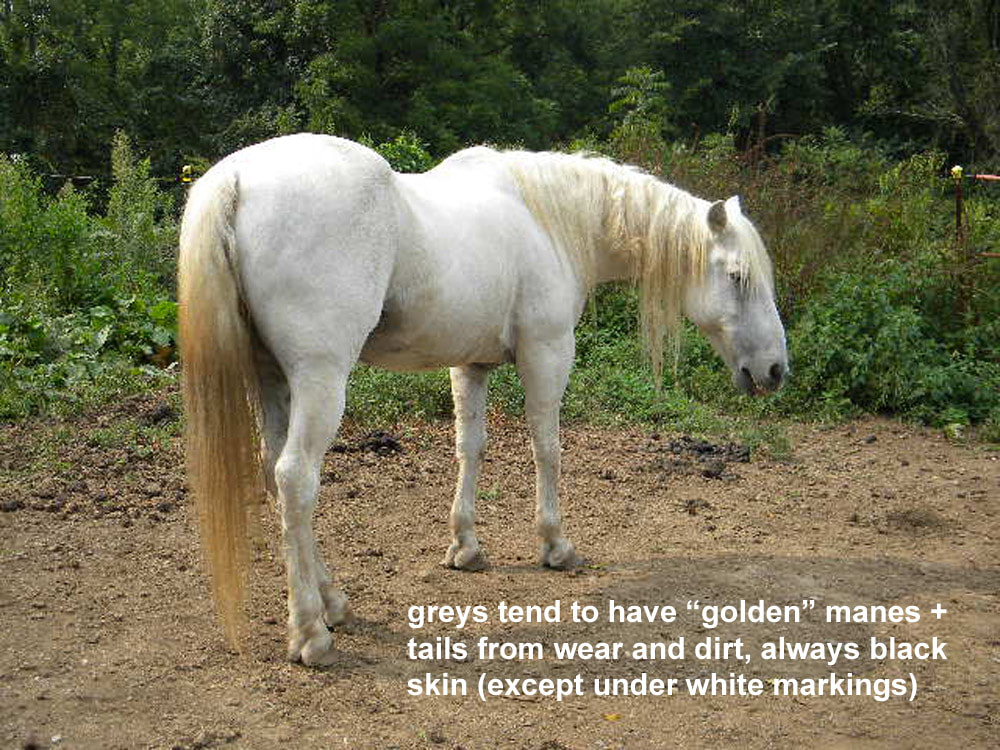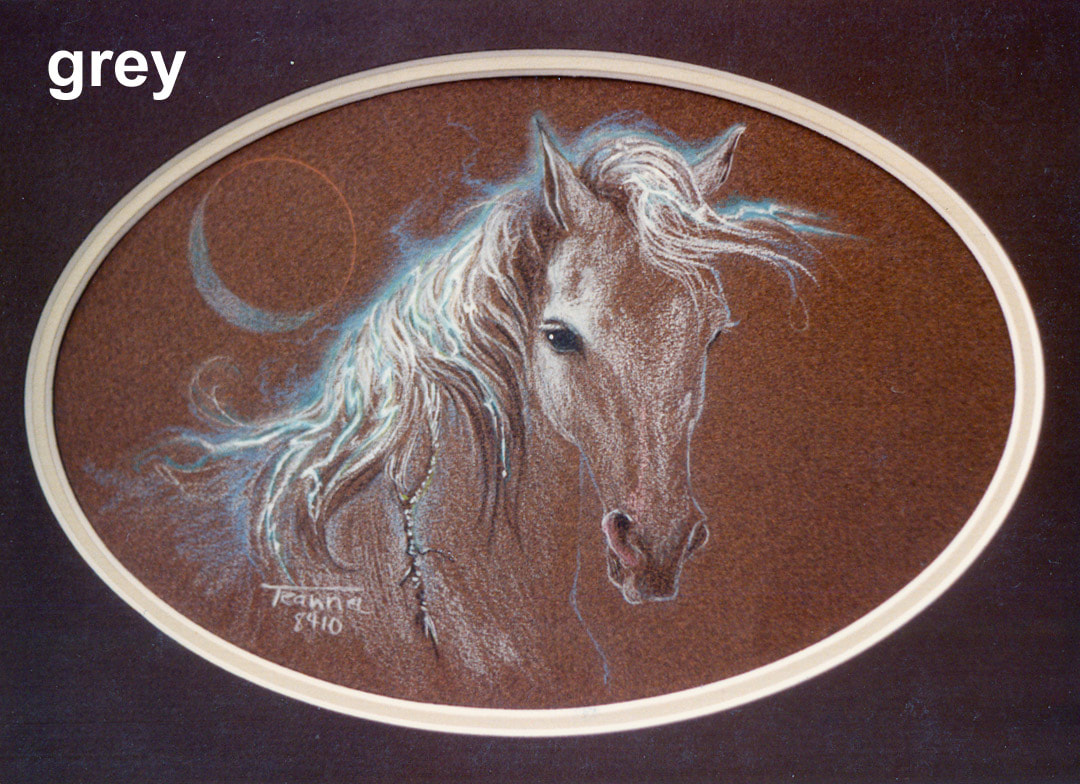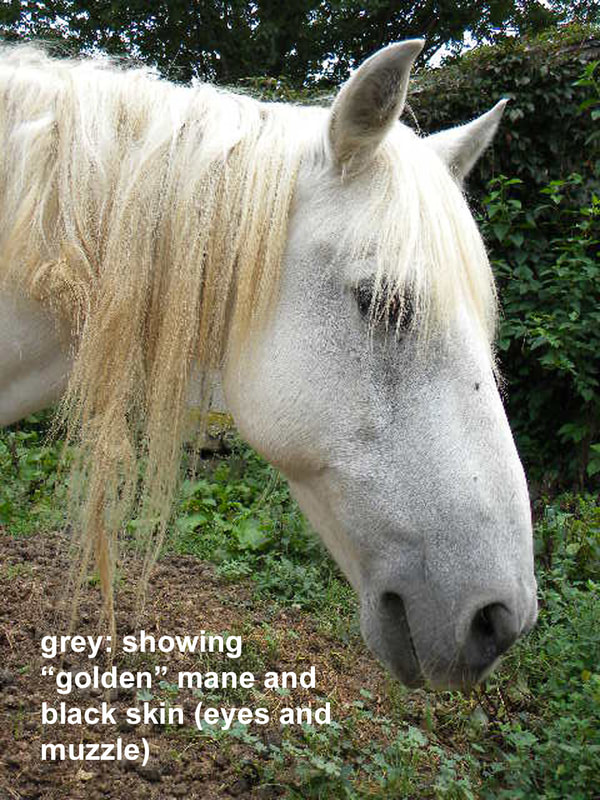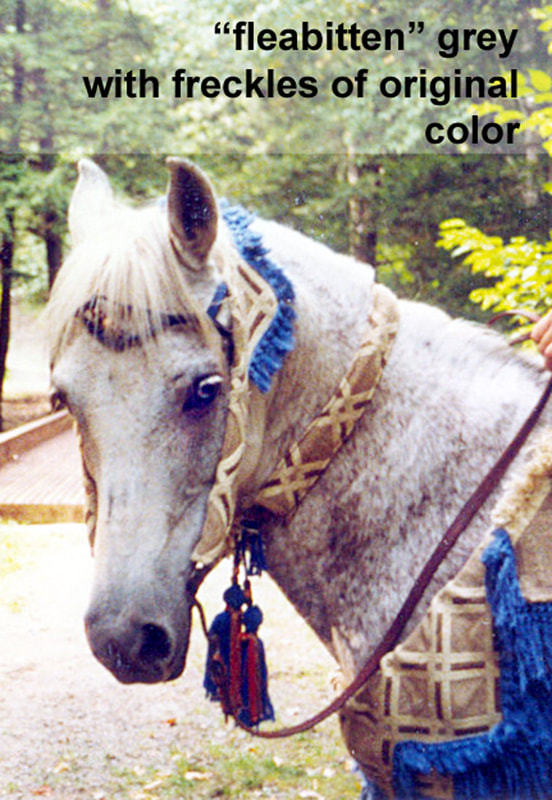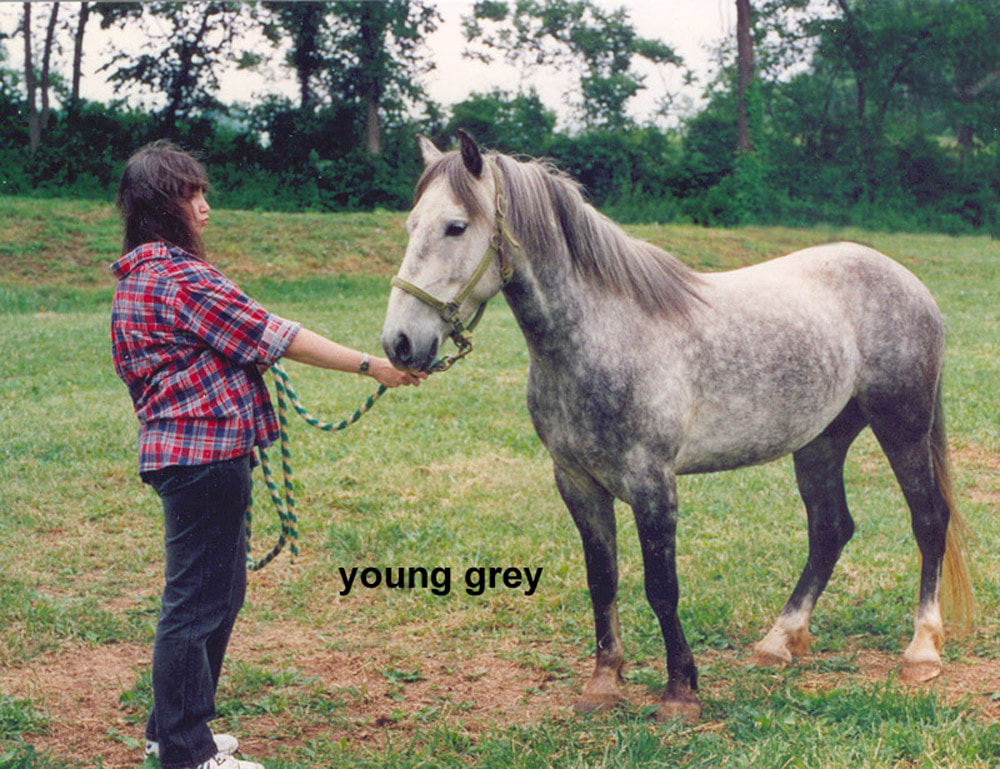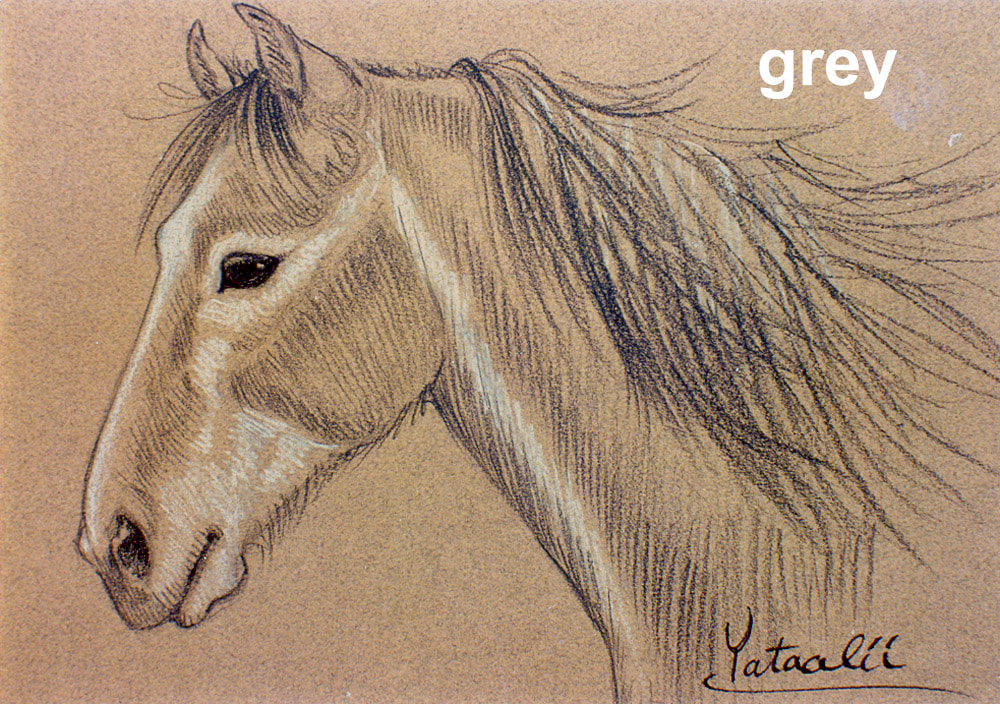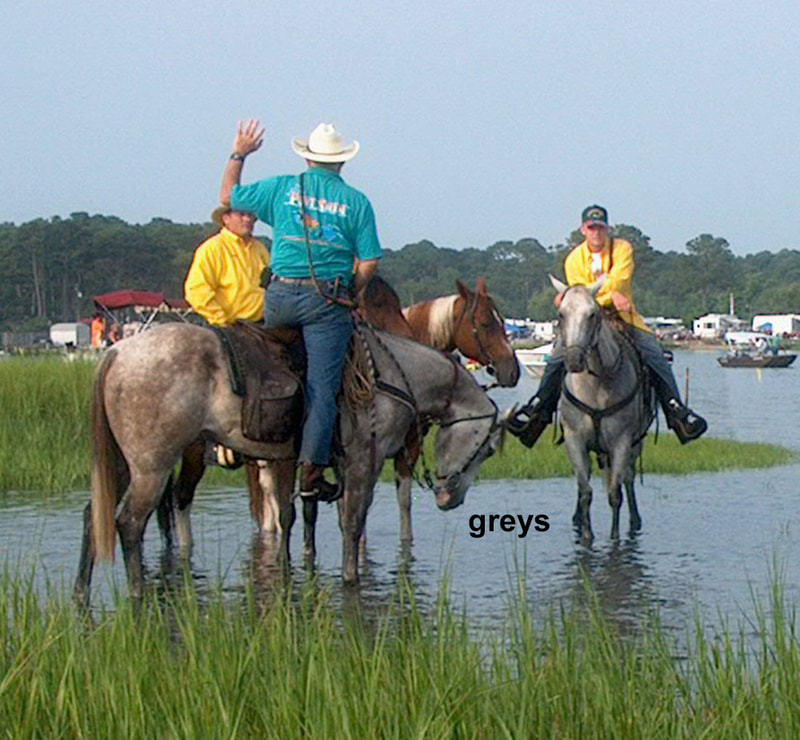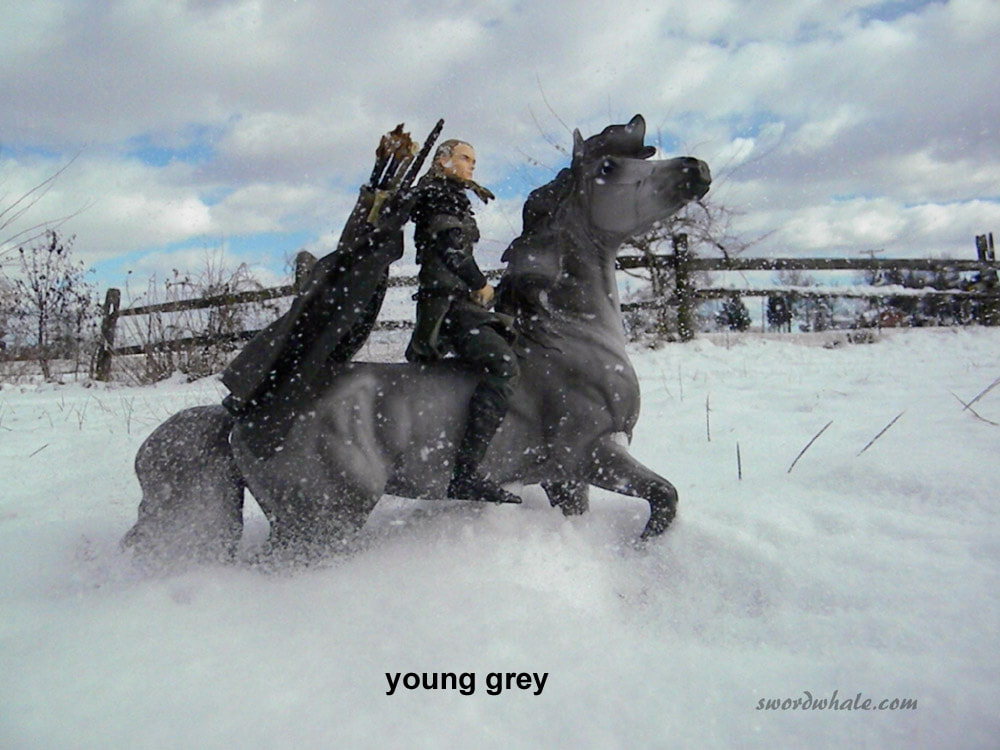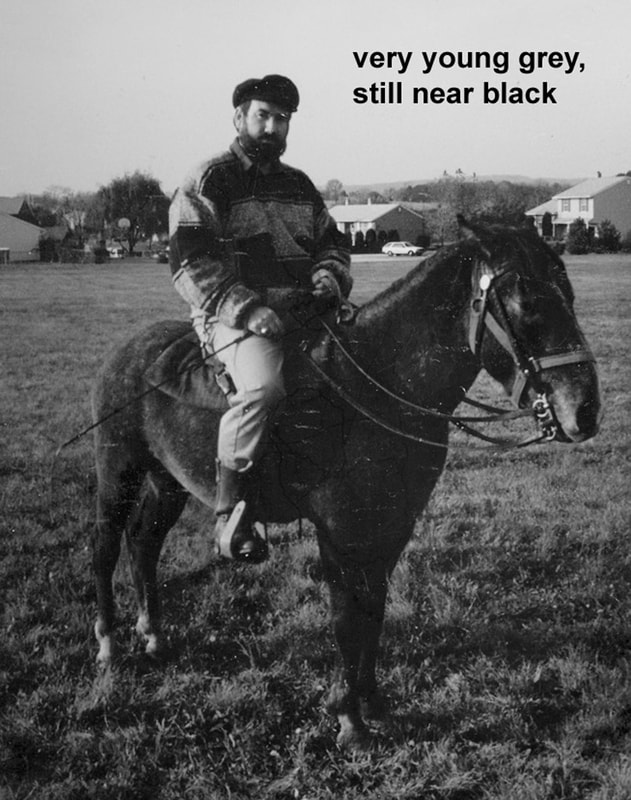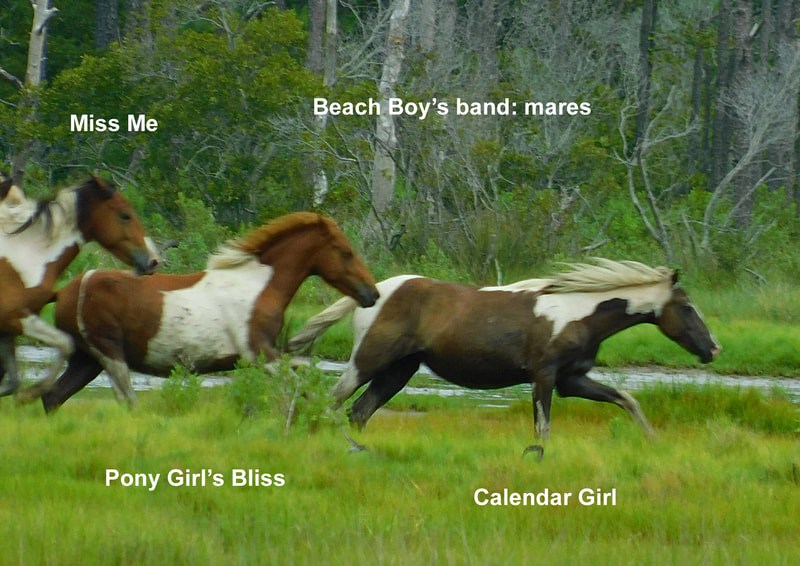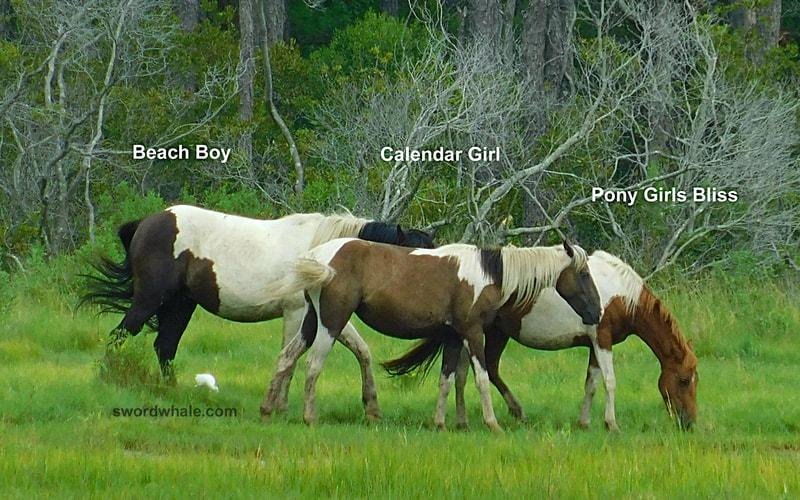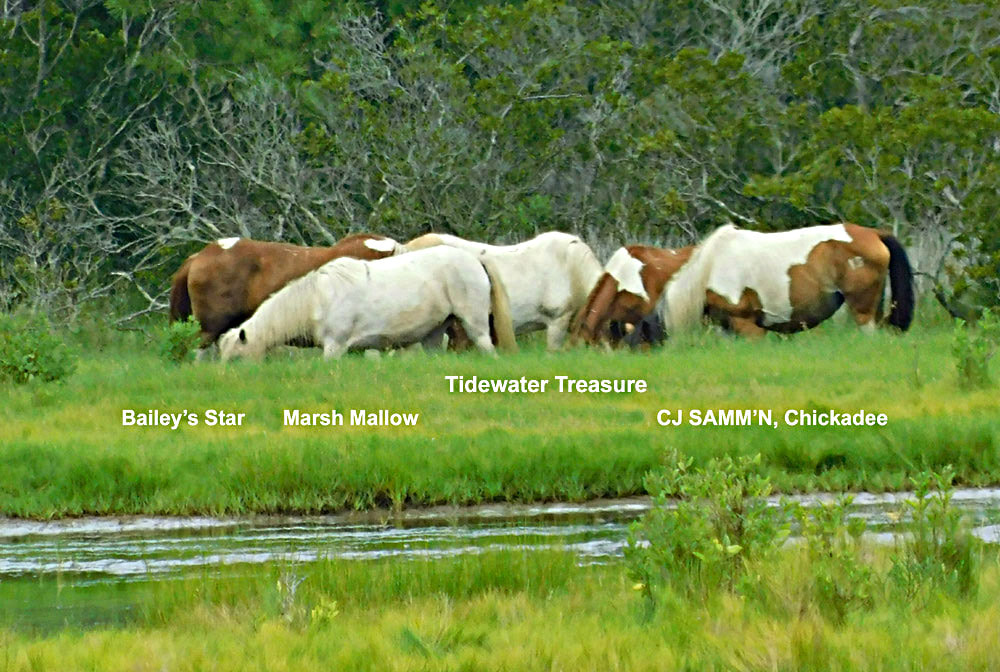a field guide for artists and aspiring horsefolk
what color was George Washington's white horse?
Probably not white. White is a rare thing in horses, and albino isn't a thing at all.
Most "white" horses are grey (starting a normal horse color and adding more white hairs as they age, like humans).
Some are double dilutes like cremello, perlino or smoky cream.
2 cream genes dilutes red and black to nearly white.
1 cream gene dilutes red to palomino, bay to perlino. A black carrying cream is called smoky black but the cream gene does not dilute black.
Some greys aren't grey either, they're grulla (black dun) or roan. They are a steely or pewter grey, not white.
Welcome to the confusing world of horse color and the genes that make it so. Here's an ever expanding collection of my photos and art of various horse colors, along with some definitions and explanations. Some are horses I've had or met, some are my models or art.
Let's try to simplify...
Most "white" horses are grey (starting a normal horse color and adding more white hairs as they age, like humans).
Some are double dilutes like cremello, perlino or smoky cream.
2 cream genes dilutes red and black to nearly white.
1 cream gene dilutes red to palomino, bay to perlino. A black carrying cream is called smoky black but the cream gene does not dilute black.
Some greys aren't grey either, they're grulla (black dun) or roan. They are a steely or pewter grey, not white.
Welcome to the confusing world of horse color and the genes that make it so. Here's an ever expanding collection of my photos and art of various horse colors, along with some definitions and explanations. Some are horses I've had or met, some are my models or art.
Let's try to simplify...
Unlike a crayon box, horse color starts with two colors;
two pigments; red, and black.
Black, Bay, Red are the base colors.
Everything else, dilutions, white patterns, is a modification of those. Red = chestnut aka sorrel, same thing.
Points: think of it as the edges; mane, tail, lower legs. They are often a different color from the body.
Shade: A palomino, a buckskin, a bay, a red and a black all walk into the barn... they are all the same color. What? The genes that cause variations in shade are poorly understood, but a dark bay can appear black (except for the cinnamon muzzle), a dark red (chestnut) or buckskin can appear blacker than a sunbleached black, and there are tested palominos who appear black. Sometimes this is caused by the sooty gene, (which darkens over time) and sometimes it is simply SHADE.
DUN is the original horse color:
Dun dilutes red and black pigments, but only on the body, not on the points. A bay horse (red with black points) becomes golden/sandy with dark points. Bay+ dun = bay dun. Red (chestnut) + dun = red dun. Black + dun = black dun (grulla, a Spanish word for crane).
In horses, donkeys and zebras, dun is the original color. Yep, zebras.
Donkeys are very clearly dun (usually a shade of black dun, that is, pewter or iron color). They have dorsal stripes (down the back) and transverse stripes (over the shoulder) as well as leg stripes sometimes. Many wild donkeys have legs with a LOT of striping.
Zebras look like white animals with black stripes (phenotype = what it looks like) but the genotype (DNA) says different. In some species of zebra, you can see shadowy lines of dun color between the black stripes. The quagga (a subspecies of Plains Zebra) had a dun body with stripes on the front half. People trying to breed back the quagga have bred zebras with less striping, and now have dun animals with stripes just on the front part.
Horses with dun have dorsal, transverse and leg striping, and sometimes faint striping on their backs and "cobwebbing" on the face... which follows the pattern of zebra stripes. Some dun horses have very loud striping patterns.
Non-dun, nd1 and nd2: Somewhere about the time horses became domesticated two mutations happened: nd1 and nd2. Most horses today have nd1 or nd2. These allow the base color to show through: black, bay, red. There is no dun diluting the base colors. A horse can be D/nd1, D/nd2, nd1/nd2 or any combination (they get one from each parent). D=dun. nd1 can slightly dilute the coat and have some striping, but it looks different from actual dun.
Leopard Complex is also ancient: Appaloosas, Knabstruppers, Norikers and others still have this white pattern which can overlay any base color.
Pinto seems to be something that happened to a wide variety of domestic animals, though it makes pretty good camo if you try to observe wild ponies on Assateague island.
SOME TERMS:
Different time periods, places, breeds, styles of riding have local terminology that can be confusing. In some places it's silver, in others taffy, same gene. Or chestnut vs sorrel, same gene. Dun and buckskin are often confused or used to describe the same phenotype, totally different genes! Brown is so terribly generic we don't even use it. Is it one of the gazillion white patterns, or grey, or a double dilute, or a few spot leopard?
The simplest way to describe a color is genetically.
DNA 101:
First, some Big Sciencey Words.
Chromosome: big piece of DNA. They come in pairs, one from each parent. Horses have 64. Mules have 63 (so yeah, this odd hybrid has one chromosome that's not a pair). Donkeys have 62. Zebras have... 32 to 46 depending on species. Donkeys and zebras are equids but have different color genetics. When you cross them with horses, you get some very interesting results.
The first important allele is E for extension; red or black pigment. Or both.
The next allele is A for Agouti. It tells black where to go.
Black, Bay, Red (Chestnut) are the base colors. Everything else, dilutions, white patterns, is a modification of those.
Skin colors: you can see skin color around eyes, muzzle, and underneath.
THE COLORS
(organized by the base color, and then under that, the color modified by dilutions and white patterns)
Modifiers and Dilutions:
White patterns:
Hybrids:
two pigments; red, and black.
- red pigment, pheomelanin
- black pigment, eumelanin
Black, Bay, Red are the base colors.
Everything else, dilutions, white patterns, is a modification of those. Red = chestnut aka sorrel, same thing.
Points: think of it as the edges; mane, tail, lower legs. They are often a different color from the body.
Shade: A palomino, a buckskin, a bay, a red and a black all walk into the barn... they are all the same color. What? The genes that cause variations in shade are poorly understood, but a dark bay can appear black (except for the cinnamon muzzle), a dark red (chestnut) or buckskin can appear blacker than a sunbleached black, and there are tested palominos who appear black. Sometimes this is caused by the sooty gene, (which darkens over time) and sometimes it is simply SHADE.
DUN is the original horse color:
Dun dilutes red and black pigments, but only on the body, not on the points. A bay horse (red with black points) becomes golden/sandy with dark points. Bay+ dun = bay dun. Red (chestnut) + dun = red dun. Black + dun = black dun (grulla, a Spanish word for crane).
In horses, donkeys and zebras, dun is the original color. Yep, zebras.
Donkeys are very clearly dun (usually a shade of black dun, that is, pewter or iron color). They have dorsal stripes (down the back) and transverse stripes (over the shoulder) as well as leg stripes sometimes. Many wild donkeys have legs with a LOT of striping.
Zebras look like white animals with black stripes (phenotype = what it looks like) but the genotype (DNA) says different. In some species of zebra, you can see shadowy lines of dun color between the black stripes. The quagga (a subspecies of Plains Zebra) had a dun body with stripes on the front half. People trying to breed back the quagga have bred zebras with less striping, and now have dun animals with stripes just on the front part.
Horses with dun have dorsal, transverse and leg striping, and sometimes faint striping on their backs and "cobwebbing" on the face... which follows the pattern of zebra stripes. Some dun horses have very loud striping patterns.
Non-dun, nd1 and nd2: Somewhere about the time horses became domesticated two mutations happened: nd1 and nd2. Most horses today have nd1 or nd2. These allow the base color to show through: black, bay, red. There is no dun diluting the base colors. A horse can be D/nd1, D/nd2, nd1/nd2 or any combination (they get one from each parent). D=dun. nd1 can slightly dilute the coat and have some striping, but it looks different from actual dun.
Leopard Complex is also ancient: Appaloosas, Knabstruppers, Norikers and others still have this white pattern which can overlay any base color.
Pinto seems to be something that happened to a wide variety of domestic animals, though it makes pretty good camo if you try to observe wild ponies on Assateague island.
SOME TERMS:
Different time periods, places, breeds, styles of riding have local terminology that can be confusing. In some places it's silver, in others taffy, same gene. Or chestnut vs sorrel, same gene. Dun and buckskin are often confused or used to describe the same phenotype, totally different genes! Brown is so terribly generic we don't even use it. Is it one of the gazillion white patterns, or grey, or a double dilute, or a few spot leopard?
The simplest way to describe a color is genetically.
- points: lower legs, mane, tail, often the same color
- dilute: some genes "dilute" the basic color, lightening it, the way you'd lighten watercolor by adding more water. One copy of these genes dilutes a little, two (a double dilute) often results in a white" horse.
- brown is not a thing: "brown" is used to describe many genotypes: dark dark bay, that near black with mealy muzzles and flanks, or deep dark chocolate chestnut, faded blacks, or even very sooty buckskins or palominos. No separate genetic markers have been proven for very dark bays or what some call "seal brown". It's agouti doing what agouti does with bay. Chocolate palomino is not a thing either; it is either a sooty palomino, liver chestnut with flaxen, or a black with silver. Silver/black with a cream gene can look paper bag color.
- White is sort of a thing: "White" is usually an aged grey or a minimally marked pinto or leopard, or a double dilute like cremello or smoky cream. Real white does exist but is rare: it is called "dominant white" and has pink skin. Grey horses have the usual horsey black skin. Horses do NOT come in albino.
- foals: often change color as they shed their first coat, and grow up... even eye color can change. Marguerite Henry famously picked out a nice palomino pinto Chincoteague foal who arrived at her house in the winter looking like a ball of white fuzz... "Where is my map and plough???" (the markings in the pinto pattern). Misty finally shed out in the spring to reveal her true colors. Black foals often appear dun or yellowish bay or dusty, then shed with shiny black appearing underneath.
- seasonal: horse colors shift sometimes with the seasons. I have two medium bays who sunbleach to light red in the winter (the long hair wears, breaks and bleaches easier), shed out near black, then do the final shed to deep red/browns with black shading. My mare's mustang mother shed pure black each spring, then sunbleached to burnt toast in a month. Same in the fall. She was either a fading black or a smoky black (with one cream gene). Some smoky blacks sunfade to a yellowish color that looks like dark buckskin (in both smoky black and buckskin, that's a cream gene working on a base color, black or bay). Palominos and buckskins often become near white in the winter, then shed out golden. Roans are notorious for changing color seasonally, from pale sugar frosted to "I can't tell it's roan" (looks like a normal color).
- color shift with age: greys begin a normal horse color (though occasionally one will be born grey or near white) then add more white hairs as they age... usually becoming "white" by the time they are ten. Some leopard complex horses (like Appaloosas) get more white hairs as they age (more roaning). Most non-grey horses will get some grey around the head as they get really old. Actual roans do not change with age.
- genetic alphabet soup: a single horse can have multiple color genes. I knew a mare who appeared white but combined leopard/grey/pinto genes (she's farther down the page). Silver bay is red and black and agouti and silver... so you get a red horse with silver points. You can combine buckskin and dun to get a dunskin, throw in a silver gene and you get a gold horse with a silver mane that's NOT a palomino. Two cream genes on a black horse make it white. Or a cream and a pearl. Or throw silver and dun at black and get a pewter horse with a pale silver mane and tail!
- Phenotype (looks) and genotype (DNA) are different. You can't always tell a horse's color by looking: Sometimes you have to do a DNA test to determine what a horse's real color is. Gold champagne and palomino look alike, except for the skin and eye color. Buckskin and dun look alike: except for duns having striping. Maybe. Is it flaxen chestnut? Or silver black (cough Surfer Dude cough looking at you). The latest info on Surfer Dude is that he is actually dark chestnut with flaxen. His son, Surfer's Riptide, continues his legacy.
DNA 101:
First, some Big Sciencey Words.
Chromosome: big piece of DNA. They come in pairs, one from each parent. Horses have 64. Mules have 63 (so yeah, this odd hybrid has one chromosome that's not a pair). Donkeys have 62. Zebras have... 32 to 46 depending on species. Donkeys and zebras are equids but have different color genetics. When you cross them with horses, you get some very interesting results.
- Gene: smol piece of DNA.
- Locus: where it is: its locus, like location.
- Alleles: different versions of one gene. Each of a pair of chromosomes has That Same Gene, only it may be different versions on each chromosome.
- Homozygous: that allelle is the same on each.
- Heterozygous: it's different.
- Wild Type: the original model from the dawn of time, the wild version before domestication.
- Phenotype: what the horse LOOKS like
- Genotype: what the genes say: they are written as caps or lower case letters: ee = horse with no black pigment, Ee = one allele for black, one for red, EE = two alleles for black.
The first important allele is E for extension; red or black pigment. Or both.
- EE or Ee or ee controls whether a horse is red or black.
- Black is dominant, red is recessive.
- Only ee is red. (the small e indicates no black pigment, though an ee horse can be very dark, or have dark points. It's concentrated red, not black.)
- E is dominant extension, not "dominant black". It means horse can produce red and black pigment.
- There is no such thing as "homozygous black". Ee or EE means the horse can produce red and black pigment. EE is homozygous dominant extension. Ee is heterozygous dominant extension.
The next allele is A for Agouti. It tells black where to go.
- AA or Aa is bay: the black has been shoved to the edges. Only the points, mane, tail, lower legs and ear tips are black. The underlying red pigment shows through on the body.
- When it is aa the whole horse will be black (if horse is Ee or EE).
- If the horse is ee (red), then agouti does nothing, it doesn't affect red.
- A red horse can carry agouti. I have a bay mare out of a black mare by a chestnut (grey) stallion. The black mare has no agouti (aa) so the bay had to come from the stallion: Aa or AA.
- Fun fact: because an EE or Ee horse still makes red pigment, there is no such thing as EE/Aa or EE/AA or Ee/Aa or Ee/AA making a white horse with black points.
- IF E was just black, EE/AA would be a white horse with black points, because the black would be pushed to the points by the agouti, and there would be no pigment in the body (similar to a Siamese cat)...or there would be a smudge of black in the body. An EE/AA bay would look different from an Ee/AA bay. EE/AA would be white with black points, and Ee/AA would be red with black points.
- Once more: E = red and black pigments. A controls where the black goes. ee = just red.
Black, Bay, Red (Chestnut) are the base colors. Everything else, dilutions, white patterns, is a modification of those.
- Bay and black (and dilutions thereof) are black based colors carrying at least one copy of the black based allele: E/E or E/e. Agouti determines whether the black pigment covers the whole horse or is restricted to the points.
- Black (E) is dominant over red (e).
- Red (chestnut, and dilutions thereof)) is red-based and carries two copies of the red factor allele:e/e.
- Red is recessive: e/e. The horse must be homozygous, e/e, for red to show. It is the MOST recessive coat color that exists in modern horses. Yet it is one of the most common seen. Perhaps because it's easy to breed for: e/e + e/e = e/e.
- There is NO black pigment in the hair of a red horse, no matter how dark it appears. Very dark black appearing chestnuts (e/e or red) have simply extremely concentrated red pigment (liver chestnuts or “Chocolate palominos”).
- A horse that is heterozygous (E/e) for red/black factor can pass on either red or black pigment to its foals: they can be bay, black or chestnut based.
- A homozygous black (EE) horse means that it carries two copies of the black allele (EE). A homozygous black horse will always produce black based foals regardless of its mate (black, bay or dilutions thereof).
- Red is variously referred to as chestnut, sorrel. These may refer to specific shades depending on what part of the world you're in. They are all e/e, or red.
Skin colors: you can see skin color around eyes, muzzle, and underneath.
- Horses usually have black skin. Black, bay and red horses = black skin. One cream gene (buckskin, palomino, smoky black) = black skin. Dun dilution on black, bay or red = black skin.
- Double cream dilutes have pink skin and blue eyes: perlino, cremello and smoky cream.
- Champagne horses have freckled or "pumpkin" skin and often amber or honey eyes.
- Leopard complex horses have mottled skin and striped hooves.
- Pintos have black skin under color areas (unless it's leopard or champagne or a double dilute), and pink under white areas. A pintaloosa would have mottled skin under the color areas and pink skin under the white patches.
- Muzzles are black unless the horse has a white marking that goes over the muzzle: that part would be pink. Champagne horses have pumpkin or freckled muzzles. Leopard complex horses have freckled or mottled muzzles.
- Hooves are black unless:
- horse has a white stocking: then pinkish/tan hoof
- leopard complex (Appaloosa): finely striped hooves
- ermine spots on a white stocking = broad black stripes on hoof
- double dilutes have pink skin and pinkish hooves
- champagnes have lighter hooves but not quite pink
THE COLORS
(organized by the base color, and then under that, the color modified by dilutions and white patterns)
- black
- fading black: sunburns easily to burnt toast, but no red tones like a dark bay
- non-fading black: blackity black
- smoky black: contains one cream gene, looks like black but "off" sunburns to fabulous toasted grulla-like colors
- smoky cream: 2 cream genes, looks like a white horse, pink skin, blue eyes
- grulla: black with dun gene, pewter body, dark points
- classic champagne: dark smoky sand body, chocolate points, freckled skin, honey or amber eyes
- silver: aka taffy, silver dapple, chocolate. Lightens black pigment. On a black horse creates a pewter body (or chocolate) with silver points (or blond). Sometimes dappled, especially in small ponies.
- blue roan: roan on black, white hairs throughout body, points dark, does not lighten as horse ages
- grey: begins black and acquires more white hairs as horse ages
- chestnut: any of the red/brown shades from pale red to dark chocolate, sorrel is an alternative name for it, "liver chestnut" is dark chocolate but still is that "red" gene.
- palomino: one cream gene: golden with blond to white mane and tail, body can be very pale blond, but skin is always black. eyes dark
- cremello: 2 cream genes, looks pale blond, pink skin, blue eyes
- red dun: chestnut with dun gene: warm gold, red-brown points, claybank is a lighter version
- gold champagne: looks like palomino, but with freckled skin, pale eyes (honey, amber, etc)
- strawberry roan: chestnut with white hairs throughout body (looks PINK), points chestnut or flaxen, does not lighten with age like a grey
- flaxen chestnut: various red-brown shades, has blond mane/tail, sometimes lower legs
- countershaded flaxen chestnut: lower legs and underside is pale, like a deer
- grey: begins chestnut and acquires more white hairs as horse ages, sometimes called "rose grey"
- mushroom: a "new" color science is still figuring out, it appears in mainly ponies, looks a bit like silver, but affects red pigment, turning the horse a "mushroom" color
- pearl: similar to cream, but turns whole body (including skin) to uniform apricot color. a double dilute of pearl (or combined with cream) creates a pale horse like a cremello. The double pearl usually has dark eyes.
- bay: reds and browns with black points, agouti gene makes it happen, look for the black tipped ears, "wild bay" has less black on legs with more red/blond showing
- buckskin: bay + cream gene: golden with black points
- buttermilk buckskin: bay + cream gene acting on lightest/reddest bay coat makes a pale buckskin with black points
- perlino: bay + 2 cream genes, looks like pale beach sand with sunrise-on-sand points, pink skin, blue eyes
- dun: bay + dun gene, golden with dark points, has dorsal stripe, lateral stripe on shoulders, zebra stripes on knees and hocks, primitive horse color
- amber champagne: golden sand brown points, looks like pale buckskin, lighter than classic champagne, freckled skin, pale eyes (honey, amber, etc)
- grey: begins bay and acquires more white hairs as horse ages
- red roan: bay with white hairs throughout body, points black, does not lighten, pinkish
- silver bay: bay with the silver gene: bay body (red-brown) but silver points (silver only affects the black pigment in the points).
Modifiers and Dilutions:
- Cream: this gene dilutes red. Chestnut becomes palomino. Bay becomes buckskin. Two cream genes make a "double dilute" (cremello, perlino, smoky cream) which is near white.
- Silver: this gene dilutes black. Often found in ponies and Rocky Mountain horses, it creates a pewter look with silver points (sometimes with dapples), or a deep chocolate with flaxen points that resembles a dark flaxen chestnut. Called silver dapple, taffy, or chocolate depending where you are and what breed you've got.
- Pearl: is a recessive dilution gene: one copy does nothing, two (or combined with cream gene) lightens red coats to a pale, uniform apricot color that includes body, mane and tail and creates pale skin. A cream/pearl combo is a pseudo-double dilute. They will often have pale skin and blue or green eyes. Unlike the double cream dilute and the Pearl-cream pseudo dilute the double Pearl dilute typically has dark tan eyes. It is difficult if not impossible to tell a double cream dilute from a Pearl-cream pseudo dilute without genetic testing. (thanx wiki)
- Mushroom: Mushroom is a recessive dilution gene that affects red pigment in horses. On a chestnut base coat the horse is born a pale beige with sometimes a greyish or pinkish tint and often keeps that color when it becomes an adult, but some turn darker when an adult.
- Sooty: or smutty, sooty looking shading thrown over another base color, like you toasted the horse or stood it too close to a campfire, often seen in bays, chestnuts, buckskins and palominos.
- Brindle and chimeras: while common in dogs and cattle brindle is a rarity in horses. And then it's not something than can be bred for, because it's often caused by chimerism: the horse has two sets of DNA of two different shades, which form a striped pattern. Dunbar's Gold is a famous brindle stallion. One of his sets of DNA is actually female.
White patterns:
- leopard complex: a widely varied collection of pattern with marbling, roaning, egg shaped spots, white blankets with or without spots. It is a primitive horse color and can be found in various horse breeds around the world. The American Appaloosa and the European Knabstrupper are well known. It can be on any color base. Appaloosa and horse color sites have lots of info on this one.
- pinto: pinto is a color pattern, Paint is a breed of (usually but not always) pinto colored horse originating from American Quarter Horse lines. Pinto can be based on any color including greys, leopards and double dilutes. I knew a horse who appeared white but was actually Appaloosa/pinto/grey. There are a bunch of different patterns like tobiano, frame overo, sabino and splash. Pinto and Paint horse pages can go into more detail on those. My favorite pintos are the Assateague/Chincoteague ponies, who are either tobiano or splash with some sabino.
- skewbald and piebald are European terms for color/white and black/white. It's easier and more accurate to describe by saying the base color plus pinto: as in "bay pinto" or "buckskin pinto".
- Some tobianos have "roaning" in parts of their color pattern.
- grey: can be based on any color. Foals are often born a regular horse color, then acquire more white hairs as they age until they are white or near-white. They may or may not go through a dappled phase, and end up in a "fleabitten" or freckled phase.
- roan: can be based on any color, white hairs are spread over the body, the points remain the normal horse color. Red-based colors end up looking pink. Black roans are actually called "blue roan".
- white markings: blazes, strips, stars and snips on faces... stockings and socks on feet. Can be over any color or other patterns.
Hybrids:
- when crossing equines, you sometimes end up with oddball colors and patterns. Mules (male donkey x female horse) and hinnies (male horse x female donkey) are donkey/horse, zorse or zebra mules are zebra/horse, zonkey is donkey/zebra (usually with striped stockings)
- donkey spotting patterns are different from horse pinto patterns, so the cross is fabulously odd
- leopard mules, same story
- zebra/horse crosses often have the zebra stripes overlaid on the horse color. Zebra stripes don't show up in the white markings because those contain NO COLOR!
- zebra/Appaloosa crosses would have the stripes show up in the color portion of the leopard pattern.
Brindle is the result of two sets of DNA: chimerism.
a gallery of colors
What color is that "white" horse?
Misty's Honeymoon: Chincoteague pony in double dilute and pinto
"Double dilute" is two cream genes. Cream modifies base colors making them lighter.
Pinto is a white pattern overlaid on any color.
I met Honeymoon on Chincoteague in August 2019. She was living at the Refuge Inn, which is a nice place to stay, next to the MacDonald's at the end of the universe (or at least, the edge of the North American continent, it's the last thing you pass on the road to Assateague Island).
I may have spent a fair amount of time educating other tourists on horse color 101, I was so thrilled to see this filly.
Many of the palominos on the island are very pale, especially in winter coats, they appear white. The difference is palominos have black skin, visible around the eyes and nose, and dark eyes. So do buckskins. Both are single dilutes, one cream gene turns chestnut to golden palomino, and bay to sandy buckskin. It turns black into smoky black but that basically looks black.
Two cream genes on chestnut, bay or black make a "white" horse. If you look closely, you can tell it's pale sand, not white. Chestnut becomes cremello, bay becomes perlino, black becomes smoky cream. Honeymoon has some pinto markings. You can see the white blaze on her face surrounded by the pale sand of the perlino. You can also see a sandy marking on her neck. She is listed as perlino (her mother, Martha, is a single dilute of bay, a buckskin)(both her parents are half Arabian, half Chincoteague Pony):
http://chincoteaguepedigrees.com/pedigree/pedigree.pedigree.php
Her pink skin and blue eyes mark her as a double dilute, though at this age it's hard to tell if cremello or perlino or smoky cream. Her people believe she is perlino. She has a tail that looks like the typical tobiano pinto, white at the top and color at the bottom, it appears amberish, like a perlino. That amber color can also be a white horse with wear and dirt.
Her sire is: "WH Clear Blue Sky. Smoky black tobiano splash white male with blaze, four stockings. Blue eyes. Great Great Great Grandfoal of Misty." Both parents carry a cream gene.
Pinto is a white pattern overlaid on any color.
I met Honeymoon on Chincoteague in August 2019. She was living at the Refuge Inn, which is a nice place to stay, next to the MacDonald's at the end of the universe (or at least, the edge of the North American continent, it's the last thing you pass on the road to Assateague Island).
I may have spent a fair amount of time educating other tourists on horse color 101, I was so thrilled to see this filly.
Many of the palominos on the island are very pale, especially in winter coats, they appear white. The difference is palominos have black skin, visible around the eyes and nose, and dark eyes. So do buckskins. Both are single dilutes, one cream gene turns chestnut to golden palomino, and bay to sandy buckskin. It turns black into smoky black but that basically looks black.
Two cream genes on chestnut, bay or black make a "white" horse. If you look closely, you can tell it's pale sand, not white. Chestnut becomes cremello, bay becomes perlino, black becomes smoky cream. Honeymoon has some pinto markings. You can see the white blaze on her face surrounded by the pale sand of the perlino. You can also see a sandy marking on her neck. She is listed as perlino (her mother, Martha, is a single dilute of bay, a buckskin)(both her parents are half Arabian, half Chincoteague Pony):
http://chincoteaguepedigrees.com/pedigree/pedigree.pedigree.php
Her pink skin and blue eyes mark her as a double dilute, though at this age it's hard to tell if cremello or perlino or smoky cream. Her people believe she is perlino. She has a tail that looks like the typical tobiano pinto, white at the top and color at the bottom, it appears amberish, like a perlino. That amber color can also be a white horse with wear and dirt.
Her sire is: "WH Clear Blue Sky. Smoky black tobiano splash white male with blaze, four stockings. Blue eyes. Great Great Great Grandfoal of Misty." Both parents carry a cream gene.
SNOW: the Appaloosa pinto grey mare
Some horses are a combination of color genetics. I met Snow at a farm I worked on, and thought of her at first as a "white" horse. Clearly she had some Appaloosa (leopard complex) blood due to the freckeld skin, the white sclera around the eye, and the striped hooves. She appeared to have greyed out (so she had a grey gene too) because she had the little "fleabitten" freckles in her coat. On closer inspection I saw some areas had zero color, not even the skin (you can see this easily when a horse is wet). She was also a pinto!
Golli, Svaha, Saraf, Lor: what color is that brown/black horse?
"Brown" is either bay, black (faded), or dark chestnut. Golliath (Golli) is a darkish bay mustang who, most of the year, looks dark bay. In winter he can bleach to a definite red, with yellow tones. In spring, as he shifts from winter to summer coats, there is a stage where he is black, with "mealy" or countershading around muzzle, flanks, chest, and inside the legs. Svaha is a medium bay who gets some of the black shading as she sheds, but not as much. She sunbleaches more in winter, including her mane, so she just basically looks red. All over. Many of the Chincoteague ponies, who spend all year in the wild, sunbleach spectacularly so you can barely tell what real color they are. Lor was Svaha's mother, a mustang from Oregon who came to me blackity black, then sunbleached to burnt toast (with NO red tones, only yellow, so she is not bay). She was probably fading black or smoky black (one cream gene). Saraf was blood bay, a clear very red bay... but he had wild bay characteristics too: less black on the legs.
seeing spots: pintos
Pinto is a white pattern thrown over a normal horse color (any color, including, grey, leopard, roan, or dilutes).
Paint is a breed (based on stock horse lines) and individuals may appear with zero white spots.
A horse is usually considered a pinto if there is white above the knees and hocks.
There are several distinct pinto patterns, and they can mix and blend to utterly confuse the best horemen.
Tobiano is the one most seen.
Overo is anything not-tobiano: frame, splash, sabino, as well as "tovero" (a combo of the obvious).
Dominant white is a “dominant” pattern of white spotting. If a horse inherits one copy of the Dominant White allele, he will express that phenotype, just like the Tobiano allele. Heterozygous dominant whites throw 50 percent color, on average, when bred to solid horses. https://apha.com/news/10-things-you-need-to-know-about-dominant-white/
None of them are the same as pinto or piebald patterns in donkeys, dogs, cats, cows or other animals. (yes, we can tell if you've faked your pattern out of your head). A "medicine hat" is a mostly white pinto with color on the top of the head and ears (as if wearing a hat), sometimes with a little color on the flank, or a chest shield. Tobiano tends to be large maplike patches while overo tends to be splashy as if paint was thrown at the horse. Actual "splash" looks like you dipped the horse in white paint. Cat tracks (ink spots, paw prints, freckles) appear in the white patches of tobianos sometimes. This is completely different from a "pintaloosa" (leopard complex/Appaloosa and pinto). In a pinto/Appy cross, the spotting (leopard complex) pattern will be INSIDE THE COLOR patches. Some (especially tobianos) pintos have roaning in parts of the color patches. They are NOT roan. Roan proper has a lighter middle body and darker points (head, mane, tail, lower legs) and a different gene causing it. The edges of pinto patches are often "blurry" due to white hair overlapping dark, or dark overlapping white. Usually under the color is dark skin, under the white is pink skin: a pinto is pinto even without hair!
Here's a few favorites, including a lot of Assateague ponies.
Paint is a breed (based on stock horse lines) and individuals may appear with zero white spots.
A horse is usually considered a pinto if there is white above the knees and hocks.
There are several distinct pinto patterns, and they can mix and blend to utterly confuse the best horemen.
Tobiano is the one most seen.
Overo is anything not-tobiano: frame, splash, sabino, as well as "tovero" (a combo of the obvious).
Dominant white is a “dominant” pattern of white spotting. If a horse inherits one copy of the Dominant White allele, he will express that phenotype, just like the Tobiano allele. Heterozygous dominant whites throw 50 percent color, on average, when bred to solid horses. https://apha.com/news/10-things-you-need-to-know-about-dominant-white/
None of them are the same as pinto or piebald patterns in donkeys, dogs, cats, cows or other animals. (yes, we can tell if you've faked your pattern out of your head). A "medicine hat" is a mostly white pinto with color on the top of the head and ears (as if wearing a hat), sometimes with a little color on the flank, or a chest shield. Tobiano tends to be large maplike patches while overo tends to be splashy as if paint was thrown at the horse. Actual "splash" looks like you dipped the horse in white paint. Cat tracks (ink spots, paw prints, freckles) appear in the white patches of tobianos sometimes. This is completely different from a "pintaloosa" (leopard complex/Appaloosa and pinto). In a pinto/Appy cross, the spotting (leopard complex) pattern will be INSIDE THE COLOR patches. Some (especially tobianos) pintos have roaning in parts of the color patches. They are NOT roan. Roan proper has a lighter middle body and darker points (head, mane, tail, lower legs) and a different gene causing it. The edges of pinto patches are often "blurry" due to white hair overlapping dark, or dark overlapping white. Usually under the color is dark skin, under the white is pink skin: a pinto is pinto even without hair!
Here's a few favorites, including a lot of Assateague ponies.
seeing spots: leopard complex (Appaloosa etc.)
It's called leopard "complex" because it's a whole set of genes creating intricate patterns of roaning and white over a normal horse color. The pattern can change (usually getting more roaning and spots) over time. It's believed to be one of the original primitive horse colors... great camouflage! In America we are most familiar with the Appaloosa, but many other breeds around the world carry these genes. Patterns include: blanket/snowcap, spots, blanket with spots, leopard, few-spot-leopard, snowflake, varnish-roan/marble, mottled, roan-blanket/frost, roan blanket with spots.
I painted the rearing Breyer classic, and the grazing black yearling with the roan blanket. The vintage Running Stallion in the lake herd is listed as a "red roan" but looks more like an Appaloosa leopard pattern with small spots. The small dark dun foal is a Breyer classic who was supposed to be dark dun... and when taken off the shelf had grown spots in a perfect snowflake pattern. He was the only one whom the mold spores found and they washed off. The Appaloosa saltwater cowboy was photographed on Chincoteague Island at Pony Penning.
